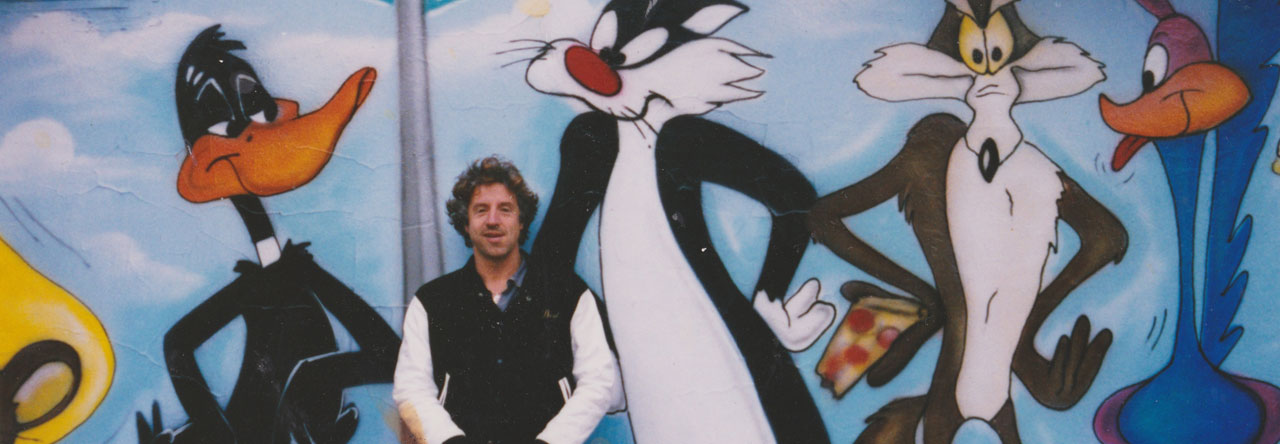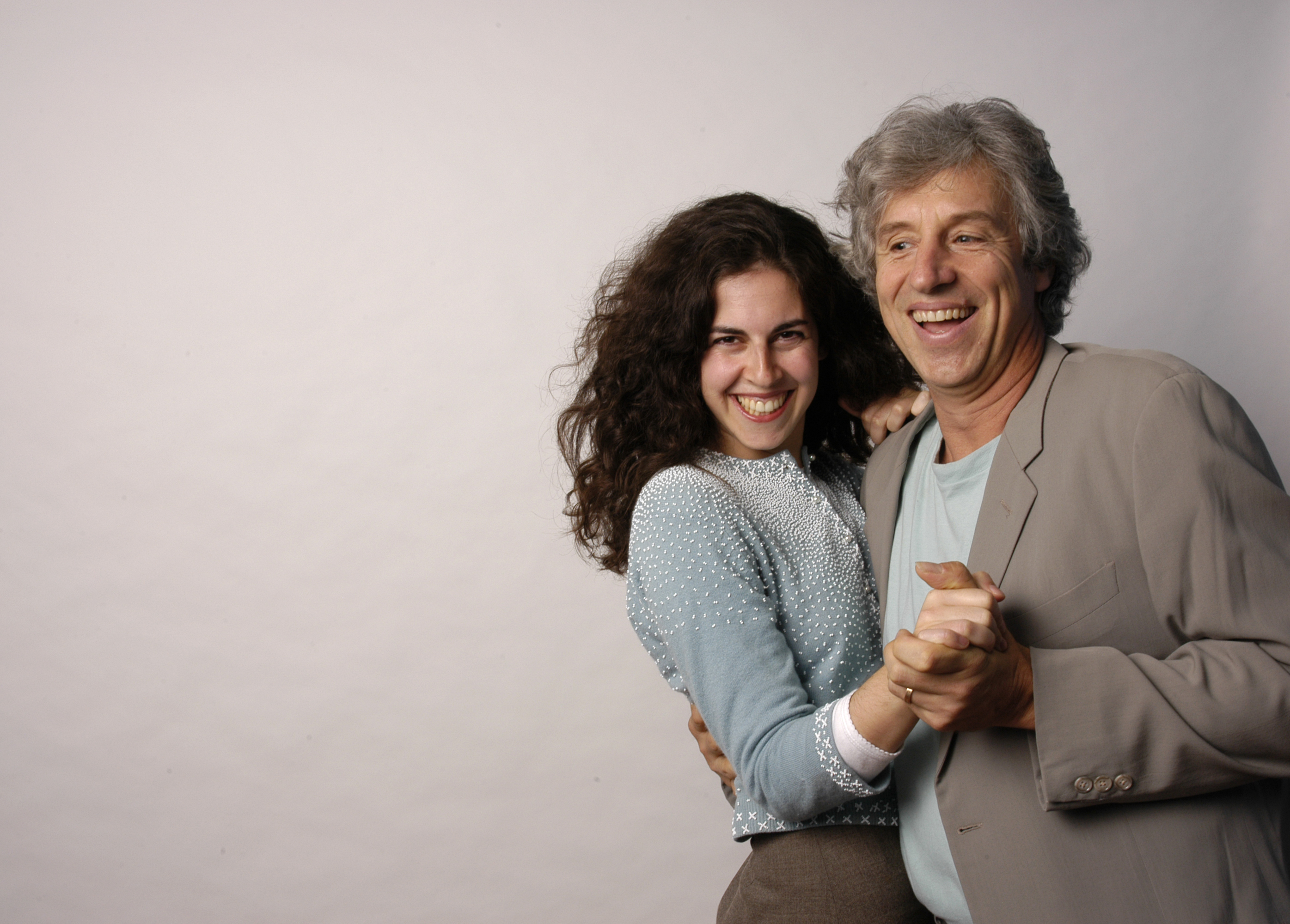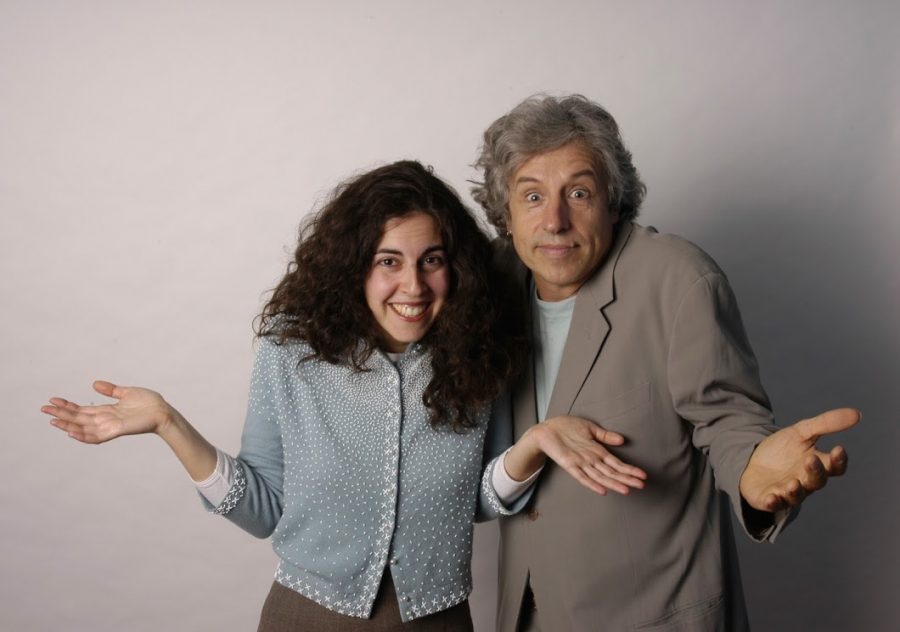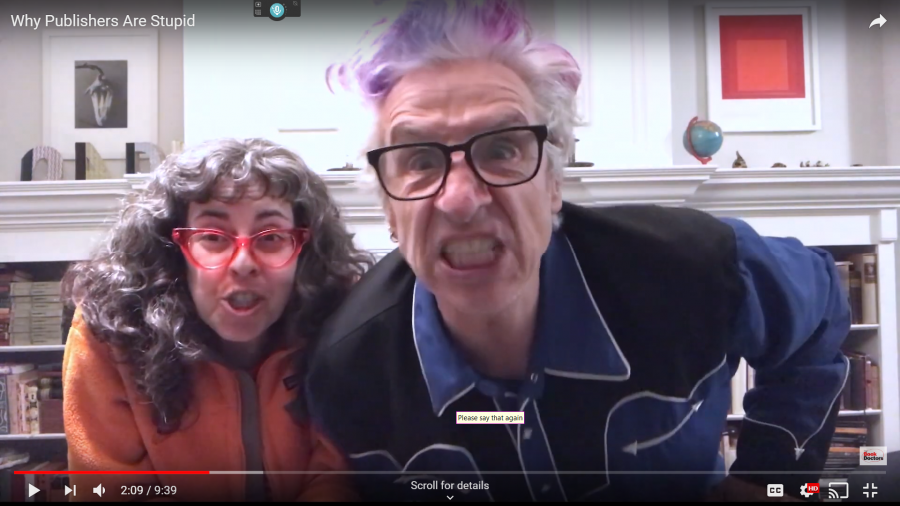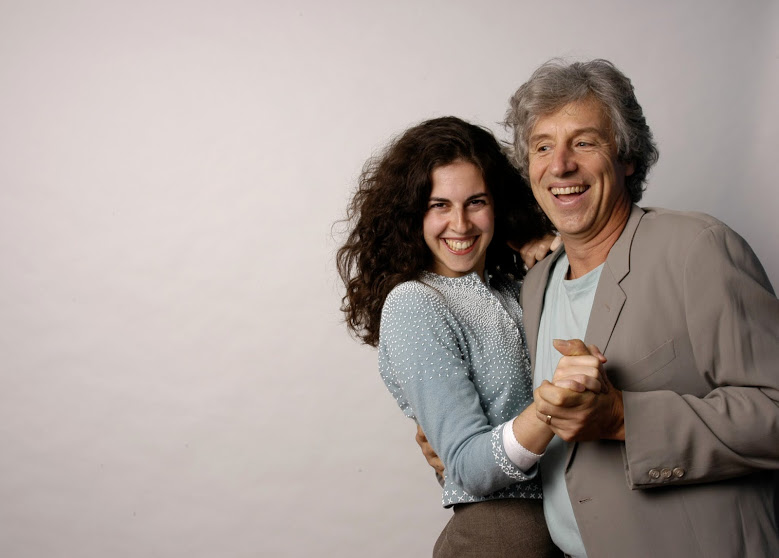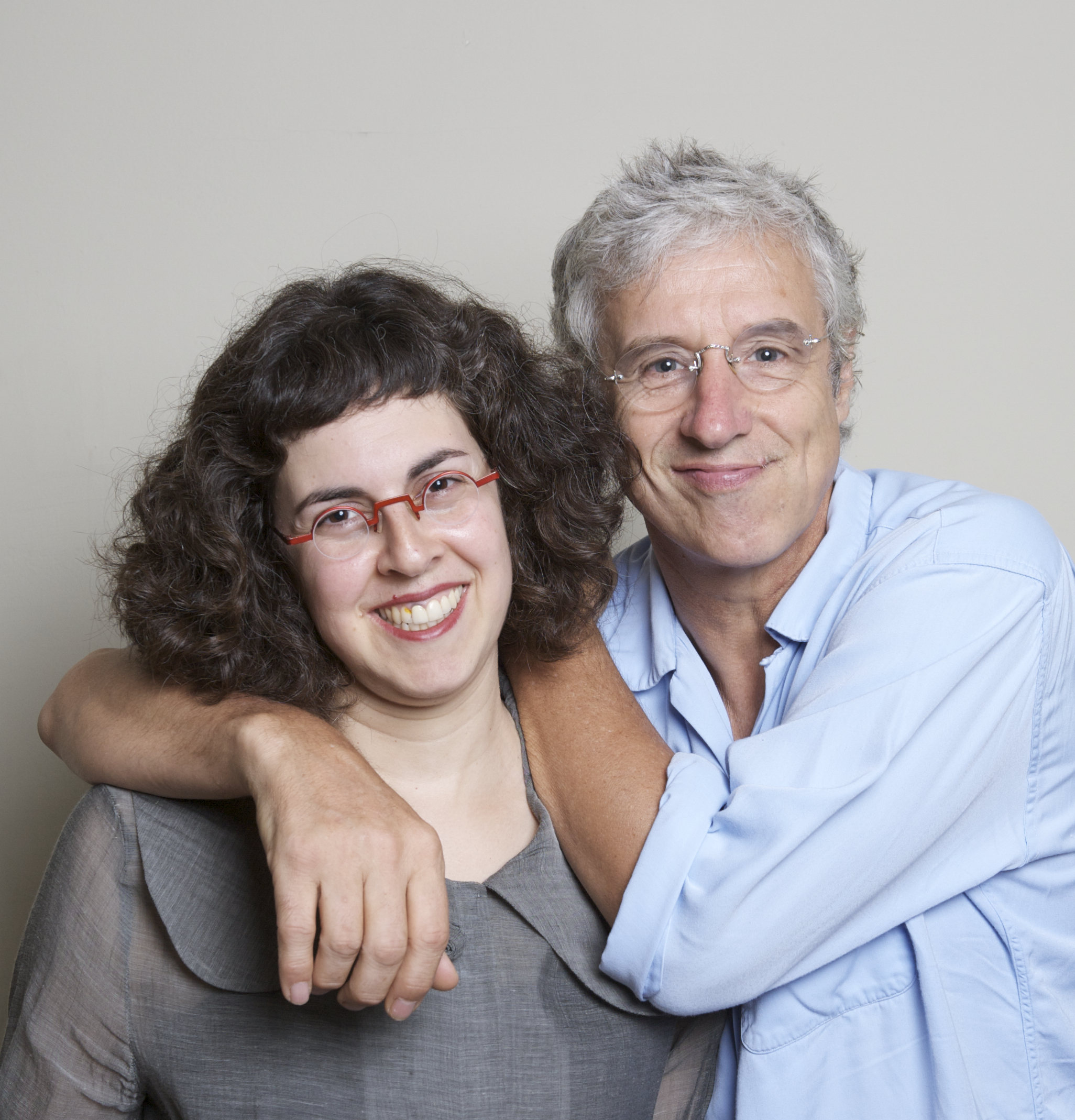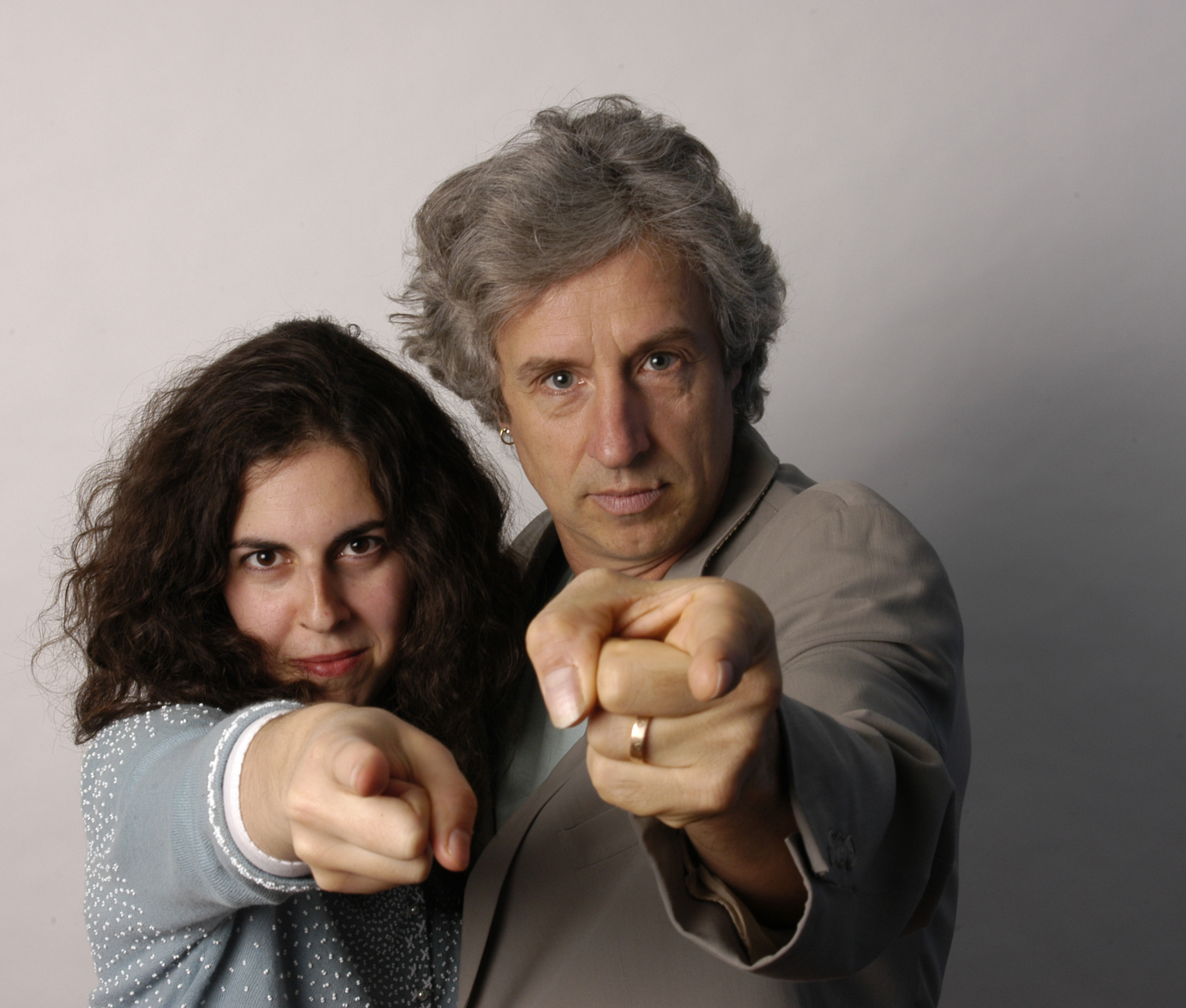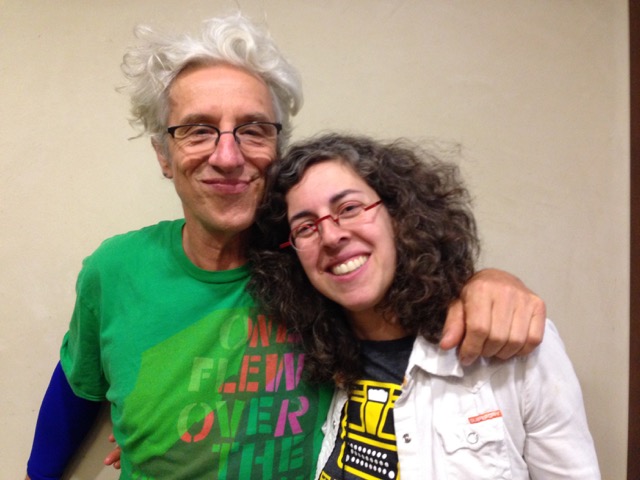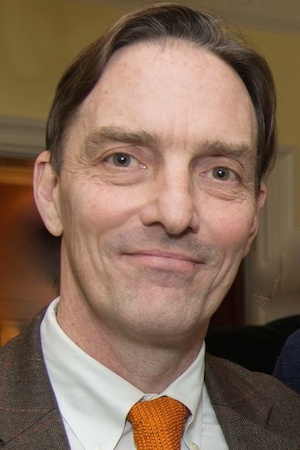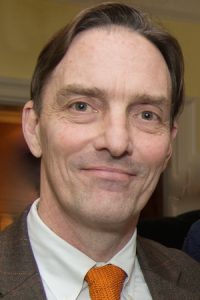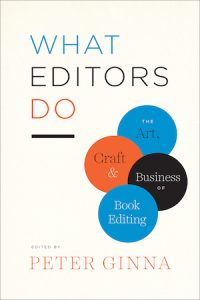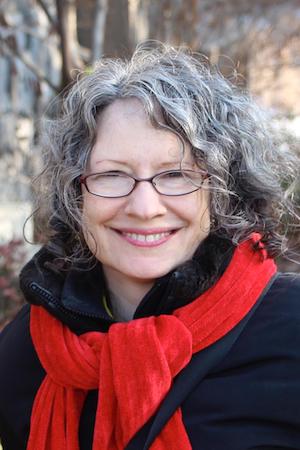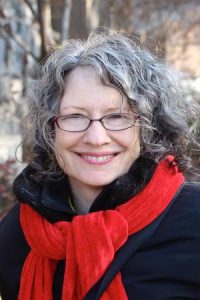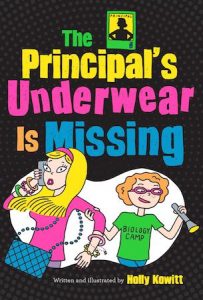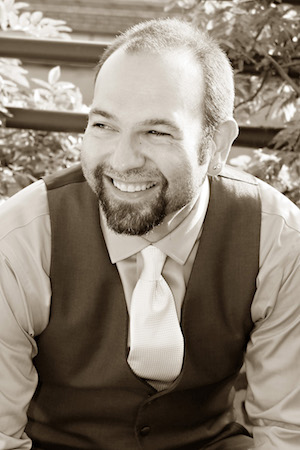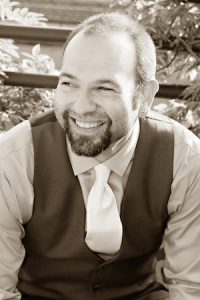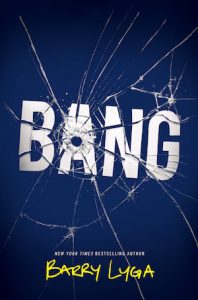How to get published by the Book Doctors
Category: About Writing Page 1 of 4
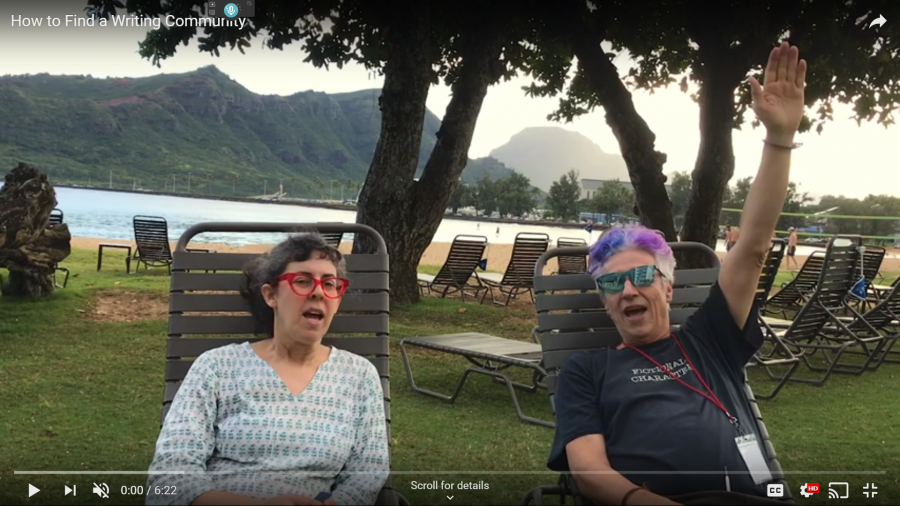
The Book Doctors talk about how important it is to build a writing community, and how to build one. And they do it from the Kauai Writers Conference!
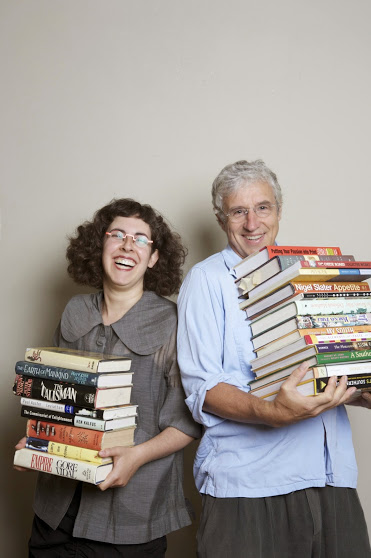
The Book Doctors at Book Con breaking down presentation tipsas they explain how to pitch your book to get published.

Do you have social mediaphobia? Scared opf Twitter? Terrified of Facebook? Shiver at the thought of Instagram? Get yourself a tween mentor. They know how to do everything on social media because their brains are hardwired that way. And, the work for Kit Kat bars.here’s a video we made to show you how.
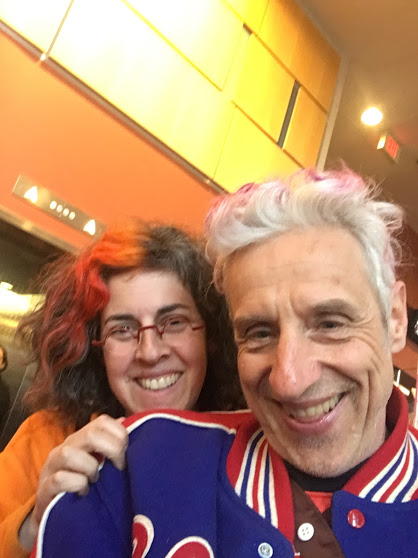
The query gets you past the gatekeepers watchdogs. Or it doesn’t. Find out how top take your best shot.
The Book Doctors break down exactly what you and make an awesome query letter, and how to customize your query for submission purposes only
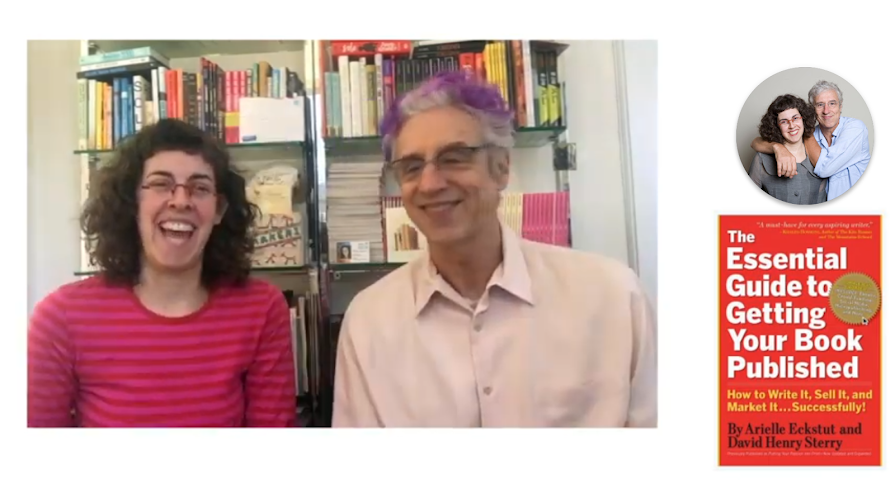
The Book Doctors scoured our archives to bring you some of our top writing advice from 2018. Ask us questions in the comments. Visit us at https://thebookdoctors.com. SUBSCRIBE: https://goo.gl/9VaE9C.
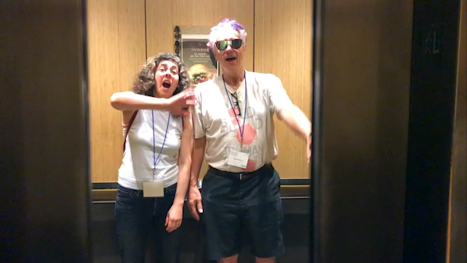
The Book Doctors, publishing experts, fix the elevator pitch
of writer Melanie Doctors, who delivers her elevator pitch
for her book to the Book Doctors at Kauai Writers Conference … in an elevator! Their elevator pitch tips follow, as they help her become a successfully published author. Thank you, Melanie!
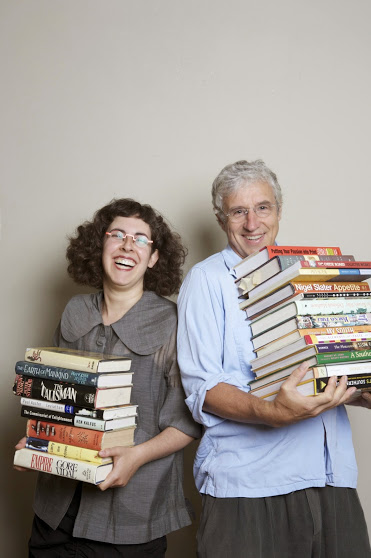
If you plan to query agents, pitch editors, or self publish, get your writing into the world before you have a book because it proves there’s an audience interested in your subject. Where to start? We’ll tell you how to pitch big publications and niche. Here’s what we cover:
- Publications that will build your platform
- Examples of bylines that landed book deals
- How to pitch publications and follow up
- Self-destructive impulses to avoid
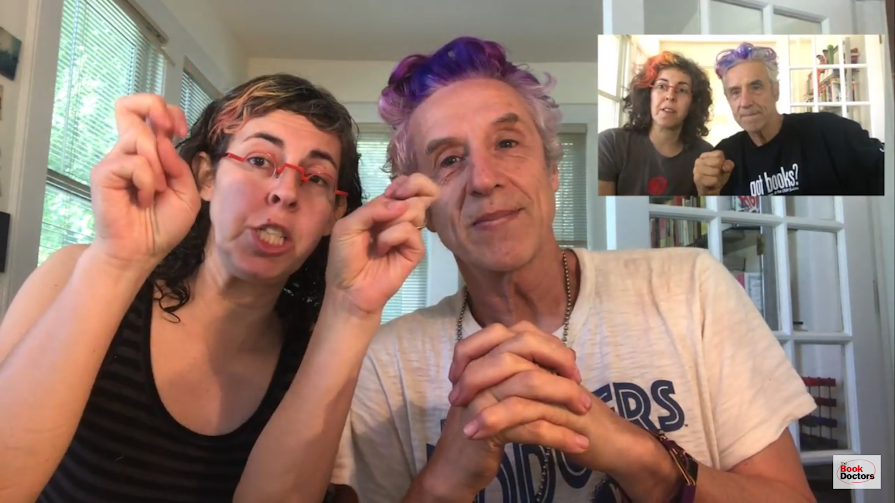
Disreputable author service companies often masquerade as legitimate publishers. Here’s how to publish a book without getting scammed. Ask us questions in the comments.
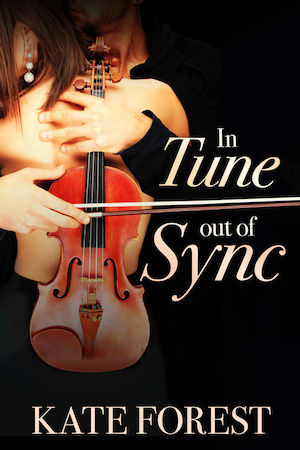
The Book Doctors are always drawn to books that break new ground. We love it when someone takes an established genre and tweaks it, twists it, then turns it on its ear. Kate Forest is making a career doing just that. She writes about romance, but she likes to make her characters have some kind of differently-able challenge. So when we saw that her new book, In Tune Out of Sync, is out, we wanted to get the skinny on what brave new world she’ll be taking us to this time.
Read this interview on the HuffPost.
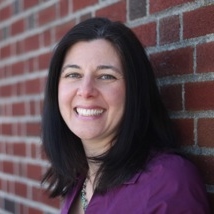
Kate Forest
The Book Doctors: What have you learned from writing your previous books that you could apply to writing In Tune Out of Sync?
Kate Forest: Everything and nothing. I feel as though I will never stop learning how to write a better book. I am constantly reading, going to workshops, and asking people for feedback. I strive to remain open in improving my craft. That said, I seem destined to write first drafts with unlikeable heroines and secondary characters that steal the scene. At least I know those mistakes are coming.
TBD: What is In Tune Out of Sync about?
KF: At the core, it’s about “inspiration porn.” This is the idea that typical bodied people watch videos or read stories about people with challenges doing everyday things and feel “inspired to do better.” As if they were to ask, “What’s my excuse?” People with disabilities are not there to inspire the rest of us. The two main characters in this book struggle with how to overcome, or use, their differences. Yes, they compete for the same jobs, but their real conflict stems from how they view themselves and how the world views them.
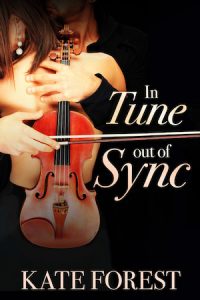
Ruby Basset Publishing
TBD: Why did you choose violin and dyslexia as such main elements of your book?
KF: I had a learning disorder when I was a kid. I couldn’t read until I was about 10. I didn’t have dyslexia, but I knew the pain that simply being in school could elicit. As a school social worker, I have worked with kids with dyslexia and wanted to bring those stories to a romance novel.
Violin? I chose something that seems counterintuitive to dyslexia and Tourette’s Syndrome. The violin, to me, seems delicate, requiring speed reading of music and total control of one’s body. Now put someone who doesn’t always control his body, and someone who can’t read quickly, in an orchestra. It was perfect for building tension.
An important thing to note about this book is that it will be available as an audio book. It’s important to make it accessible to anyone interested in dyslexia stories.
TBD: How did you get into the mindset of someone with Tourette’s Syndrome?
KF: I watched many documentaries. I interviewed people. I read. Tourette’s Syndrome is the one issue I have written about that I hadn’t had much experience with. I needed to be accurate and sensitive. I wanted my language to reflect how people in the TS community talk. Two resources I recommend are Jess Thom’s Touretteshero site and An Unlikely Strength by Larry Barber.
TBD: How did you manage to capture the world of the New York Philharmonic and high-end classical music? Did you do lots of research?
KF: Oh, I had to do tons of research. My music education ended in 5th grade with “Hot Cross Buns” on the recorder. I love music, and admire people who make it. Luckily, I know professional classical musicians, and they were kind enough to read drafts of the story and answer my insane questions.
TBD: How do you devise plots for your romances?
KF: I don’t start with plots. Romance stories hinge on the characters. For me, the characters’ inner conflicts are what drive the story. I begin by developing the characters. What do they want? Why do they want it? And what is standing in their way? Layer on that, the two main characters need to have goals that are in direct conflict with each other. There has to be no possible way these two people can end up together. And then, they grow and change, and presto, they are together—happily ever after.
TBD: How do you not fall into cliché as you write books that are filled with so many rules?
KF: The only real rule to genre fiction is that there is an emotionally satisfying ending. I prefer genre fiction to literary fiction for this reason. The genre fiction author makes a promise to the reader on the first page: You will be entertained, we will go on a journey, and everything will be answered in the end. Whether you’re fighting an alien invasion, rooting out a murderer, or watching two people find love, there will be a solution. So clichés? There’s no reason to rely on them when there are no limits.
TBD: Do people who are differently abled ever contact you?
KF: These are my best reviews and letters. I get emails from parents of kids on the spectrum and people with different challenges who say my book portrayed the characters in a sensitive and accurate way. But I’m also happy when someone reads the story and says, “I learned something about this issue.” The more we see fictional characters with disabilities in typical situations, the more we will accept real life people with disabilities in all areas.
TBD: Does your writing fall into any single category? Do you try to fit into the romance genre?
KF: Some people have told me that my books aren’t strictly romance, since they tackle other issues. But the truth is that my books fit squarely in the romance genre. The Romance Writers of America defines romance as stories that “contain a central love story and the resolution of the romance must be emotionally satisfying and optimistic.” All of my books easily meet these criteria. There should be no reason that a story that portrays characters with disabilities should be outside of this genre.
TBD: What new advice do you have for writers?
KF: I’d ask what your goal is as a writer. If you’re writing for pleasure, or you have a single story you want to share, then have fun. Work at your own pace. Take some writing classes. Find a group of like-minded writers. If you have a goal of being a commercial writer, you must join a professional organization of writers. There’s one for each type of book. Writers can’t write alone. I have a team of critique partners who send back angry red comments, slashing entire scenes. I have a different team of beta readers (some writers, some for research questions, some who just like to read). Then I have a technical team of cover designer, formatter, and copy editor. I run a small business, and spend just as much time networking and marketing as I do writing. My grandmother was in a nursing home in her last days, after a lifetime of hard work. Her husband of over 70 years had just died. She said, “Life is not for sissies.” And all I can say is, “Writing is not for sissies either.”
Author Kate Forest has worked in a psychiatric hospital, as a dating coach, and spent a disastrous summer selling above-ground swimming pools. But it was her over twenty-year career as a social worker that compelled her to write love stories with characters you don’t typically get to read about. She lives in Philadelphia with her husband, two kids, and a fierce corgi. Visit her at www.kateforestbooks.com.
Arielle Eckstut and David Henry Sterry are co-founders of The Book Doctors, a company that has helped countless authors get their books published. They are co-authors of The Essential Guide to Getting Your Book Published: How To Write It, Sell It, and Market It… Successfully (Workman, 2015). They are also book editors, and between them they have authored 25 books, and appeared on National Public Radio, the London Times, and the front cover of the Sunday New York Times Book Review
JOIN OUR NEWSLETTER TO RECEIVE MORE INTERVIEWS AND TIPS ON HOW TO GET PUBLISHED.
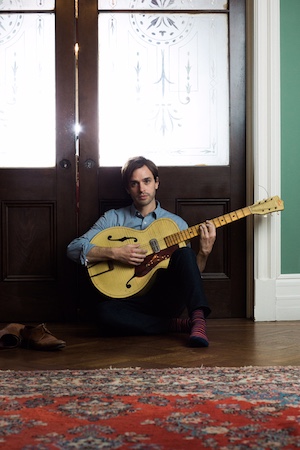
We met Val Emmich when he won our Jersey City Pitchapalooza at Word Bookstore. He was so comfortable presenting, he paused in all the right places, and he put the right emphasis on all the right words. And he had a fantastic story. We found out he’s also a very accomplished actor and musician, which explained his ability to present himself. One of the greatest things about being a book doctor is when one of your patients gets a fab book deal with a fantastic publisher. Val did exactly that. So we thought we’d pick his brain about exactly how he managed to add Author to his impressive resume.
Read this article on the HuffPost.

Val Emmich
The Book Doctors: What were some of your favorite books as a kid, and why? What are you reading currently?
Val Emmich: I have pretty poor recall of my childhood years, which may be surprising coming from someone who just wrote a whole novel about a child with a near-perfect memory. That said, I do remember ripping through as many Hardy Boys books as I could. I also have a vivid recollection of listening to one of my teachers read aloud to our class Charlotte’s Web. I was riveted by it, probably because it’s about animals and I love animals, more than I love people. Right now, I’m reading Hillbilly Elegy by J.D. Vance, a recommendation from my father, and The Nix by Nathan Hill.
TBD: David was also an actor who became a writer of books. How do you think this helped you as you craft a first novel?
VE: Acting is about putting yourself in someone else’s shoes. Embodying a character that isn’t you. It requires empathy and observational skills. You keep searching for how to get to the heart of the person you’re trying to portray. You’re looking for a detail that speaks to you. How someone walks. How he got that scar on his chin. How he styles his hair. This is all very similar to the character work necessary for writing a novel. Additionally, the process of reading and breaking down scripts was really instructive, both in terms of understanding the motivation and objective of a given scene and also how stories are structured and paced.
TBD: Tell us about The Reminders.
VE: Joan is ten and she’s got this rare condition where she can recall nearly every day of her life in exact detail. Then there’s Gavin, an actor in his thirties, who’s just lost his partner and soulmate, Sydney. Gavin attempts to rid his life of all reminders of Sydney, hoping it’ll soothe some of his overwhelming pain. But then he learns that Joan possesses detailed memories of Sydney, stories about him that Gavin has never heard, and Gavin has no choice but to dive back into the past. Meanwhile, Joan wants something back from Gavin. She’s the girl who can’t forget, but she’d rather be the girl who can’t be forgotten and she believes that Gavin, a semi-celebrity, might be able to help her achieve that dream.
The idea for the novel first came to me when my daughter fell out of a shopping cart in Home Depot and landed on her head on the concrete floor. Around the same time I saw a piece on 60 Minutes that featured people with this real-life memory condition known as highly superior autobiographical memory (HSAM) and I had this absurd thought: What if my daughter’s bonk on the head resulted in her somehow acquiring this specialized memory? That ridiculous hypothesis, the playfulness of it, set the tone for the whole novel.
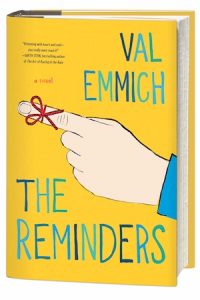
Little, Brown, and Company
TBD: Please describe your path to publication.
VE: The quick version. I wrote one novel. It sucked. I wrote a second novel. It sucked less. I wrote a third novel. It was decent enough to get me an agent. We tore the novel apart, and I built it back up again essentially from scratch. Then my agent sold the book and my editors tore it up and I put it back together yet again. By the time the novel was published, in May of this year, it had been ten years of dedicated writing, along with tons of reading (other novels, how-to books), attending writers conferences and picking the brains of the few writers I had access to who had written books.
TBD: Was it difficult writing in two voices?
VE: Very. The most difficult parts were making sure the voices were both distinct and compelling. The consensus among my earliest readers seemed to be that Joan was the star of the book. I knew I’d never be able to have Gavin outshine her. That’s not his role. Still, I wanted to make sure his sections didn’t feel like a letdown after hers.
I’d listen to different music when writing in each voice. I found songs that seemed to tap into the energy of each character. After listening to the songs over and over, the music began to trigger an almost Pavlovian response in me where I’d immediately enter the head of that specific character. Also, I focused in a boringly technical way on the language used by my two protagonists. I created a detailed spreadsheet that counted the frequency of each word in each section. It showed me a lot about what I was organically doing with each character, and at that point, it was a matter of removing what made the two voices similar and emphasizing what made them different. Eventually, this overt hypersensitivity to vocabulary became second nature and I was able to write fluidly, making Joan and Gavin their own distinct people on the page.
TBD: We notice that you are doing house concerts to promote your book. What exactly are they, and how did you come up with the idea?
VE: It just made sense. The book is partially about music. I’m a musician, songwriter, and performer. I record and release albums. I have music fans. I hoped my music fans would also be interested in reading my book. On top of all that, I’ve been to enough poorly attended author events at bookstores, and even when they’re well attended, they can be boring when it’s just straight-up reading. I wanted to do a hybrid event, some reading, a bit of discussion, plenty of music. I didn’t feel like a bookstore or traditional music venue was going to offer the intimate, casual vibe I had in mind as well as the guarantee of a crowd. I wanted a place where people could relax and stay a while and where I could really forge a personal connection. I reached out to some of my fans and asked if they’d be interested in hosting shows in their homes and inviting all their friends. They said yes.
TBD: How does being a musician and songwriter affect your prose writing?
VE: Prose writing requires an ear, just like songwriting. You need to have a sense of rhythm. Also, with a song (at least with my songs) there’s usually a refrain or leitmotif that emphasizes an important theme or emotion. I try to do the same thing in my writing, sprinkle in timely repetitions to drive home something that I deem significant. But I think the biggest thing I’ve learned from my life in music has to with my understanding of the audience. Over two decades of performing in front of a crowd and engaging online with listener feedback, I’ve learned a lot about how to make people feel something. The goal is the same when writing prose: to trigger a reaction in the reader.
TBD: What are you working on next?
VE: I’ve started writing a new novel. Before I get too deep into it, I plan to record and release new music. Songwriting is more tactile and physical than prose writing. It also takes far less time. I need a more immediate artistic fix right now.
TBD: We hate to ask you this, but what advice do you have for writers?
VE: Treat it like a real job and remember that even a so-called real job involves plenty of goofing off. Carve out time to write, whatever works for you, thirty minutes, four hours, however long and sit there, even if you’re not actually typing words or producing pages, just sit there. Even when you’re staring at a white page, mind wandering elsewhere, that’s okay. That’s work. Sitting there with that dumb look on your face is part of the job. Do it again the next day. And the next. If you miss a day, no worries. Miss two days? Doesn’t matter. Put yourself in that chair as many times as you can over as long a stretch as you can. If you keep showing up in that chair, over time, enough time, you might have something. Might not, but there’s no other way to do it. If you want it, that’s what’s required: hours. There’s less magic involved than the would-be writer might imagine. At the end of the day, it’s simple math. It’s a whole bunch of hours added up. Start spending them.
Dubbed a “Renaissance Man” by the New York Post, Val Emmich is a writer, singer-songwriter, and actor. He has had recurring roles on Vinyl and Ugly Betty as well as a memorable guest role as Liz Lemon’s coffee-boy fling, Jamie, on 30 Rock. Emmich lives in Jersey City, New Jersey, with his wife and their two children. The Reminders is his first novel.
Arielle Eckstut and David Henry Sterry are co-founders of The Book Doctors, a company that has helped countless authors get their books published. They are co-authors of The Essential Guide to Getting Your Book Published: How To Write It, Sell It, and Market It… Successfully (Workman, 2015). They are also book editors, and between them they have authored 25 books, and appeared on National Public Radio, the London Times, and the front cover of the Sunday New York Times Book Review.
JOIN OUR NEWSLETTER TO RECEIVE MORE INTERVIEWS AND TIPS ON HOW TO GET PUBLISHED.
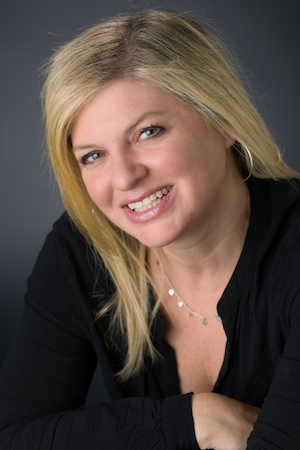
We met Jacqueline Mroz when she put together the Montclair Literary Festival. From our first meeting and all the way through the end of the festival, she was smart, she was funny, she showed up on time, and she smelled good. So we were not surprised to learn that she had gotten a book deal. Now that Scattered Seeds: In Search of Family and Identity in the Sperm Donor Generation is out, we thought we’d pick her brain about what it’s like to navigate the rocky seas of the publishing world.
Read this interview of the HuffPost.
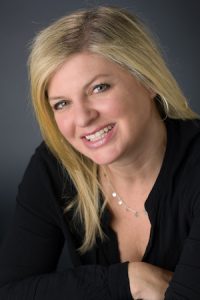
Jacqueline Mroz
The Book Doctors: What was the inspiration for Scattered Seeds?
Jacqueline Mroz: The inspiration for the book came from a New York Times article that I wrote in 2011 about a sperm donor who had 150 kids. Once I started looking into the fertility industry, I found it was full of fascinating stories and people.
TBD: How is it possible that one man biologically fathered 150 children?
JM: The sperm bank continued to sell this man’s sperm for years–and it was very popular. Most donors are asked to donate around 3 times per week. Also, each donation is divided up into somewhere between 8 and 25 vials, which are then sold to women around the world. Those numbers can really start to add up!
TBD: How did you get that great article in the New York Times? What was the fallout from it?
JM: I came across the original news story through my sister, who was trying to have a baby on her own, using donor sperm. She noticed on a message board for Single Mothers by Choice that one mom wrote about her unease when she found out that her daughter had 75 half siblings. I was intrigued and decided to dig deeper—that’s when I found out that there was a sperm donor with 150 children. The article was very popular and was picked up all over the world. As a result of the story, a state legislator in NYC introduced a bill to limit the number of kids that a sperm donor could have—but she wasn’t able to get enough support to push the bill through.
TBD: How do you think that the process of sperm donation, and the industry it has spawned, ultimately affects kids and parents?
JM: Sperm donation can be great for families or women who aren’t able to have kids otherwise, but for some children who are born through anonymous sperm donors, it can be difficult. Some of these kids become confused about their identity, and end up endlessly searching for their biological fathers, trying to figure out who they are and what they inherited from their donors. There’s also the risk of rare, genetic diseases being passed on from donors to their biological children, and then spreading through the population. (I wrote about this in another Times article.)
TBD: What are some tips for people who want to artificially inseminate?
JM: For someone who is looking to use a sperm donor, I would recommend using the Sperm Bank of California in Berkeley. They’re extremely ethical, they limit the number of kids that a sperm donor can have, they’re a nonprofit, and they try to connect kids with their donors when they’re of age. I would also make sure that the sperm bank tests its donors for a significant number of genetic diseases — and I would ask how many kids the donors has already!
TBD: Why isn’t there more oversight into what is one of the most personal areas of human existence?
JM: It’s hard to get the government to institute more oversight over the industry since there are actually few people that really want it — the parents want to have a baby, and the doctors and sperm banks want to help people — and make money. But that’s starting to change, as donor-conceived children are starting to come of age and demanding their rights. The other problem with oversight is it’s a slippery slope, and many are afraid it could lead to (even) more regulation of abortion.
TBD: What was your takeaway from talking to same-sex couples who have used artificial insemination to have a child?
JM: They are grateful for this chance to have children. Also, some of the single mothers by choice that I spoke to have been particularly good at finding and reaching out to their kids’ half-siblings — it gives them an extended family that their children might not otherwise have. Many visit each other and take vacations together.
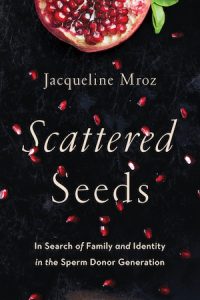
Seal Press
TBD: How did you go about getting this book deal?
JM: The newspaper article was extremely popular, so I used that and my proposal to find an agent. My agent, Jane Dystel, is amazing!
TBD: We hate to ask you this, but what advice do you have for writers?
JM: Writers’ groups can be very helpful, especially if you’re having trouble finishing something that you’re working on. You can ask the other writers to give you a deadline to help you get things done.
Jacqueline Mroz is a veteran journalist specializing in reproductive and family issues. She lives in Montclair, New Jersey, with her husband and three children.
Arielle Eckstut and David Henry Sterry are co-founders of The Book Doctors, a company that has helped countless authors get their books published. They are co-authors of The Essential Guide to Getting Your Book Published: How To Write It, Sell It, and Market It… Successfully (Workman, 2015). They are also book editors, and between them they have authored 25 books, and appeared on National Public Radio, the London Times, and the front cover of the Sunday New York Times Book Review.
JOIN OUR NEWSLETTER TO RECEIVE MORE INTERVIEWS AND TIPS ON HOW TO GET PUBLISHED.
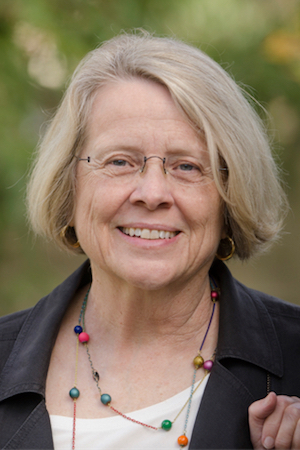
We first met Susan Wolfe when we taught a workshop at Stanford, where we were the least educated people in the room. We were struck by what a seasoned professional she seemed, even though she was a novice author. She asked all the right questions, she worked her ass off, and it didn’t hurt that she had actual bona fide talent. Her first book was a big success, and now that Escape Velocity, her second novel, is out, we picked her brain about transitioning from the world of law to the world of books.
Read this interview on the HuffPost.
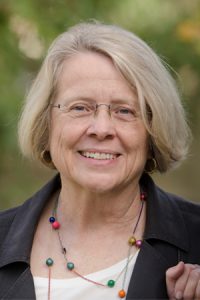
Susan Wolfe
The Book Doctors: What were your favorite books as a kid and why?
Susan Wolfe: The first real book I ever read was The Black Stallion by Walter Farley. I was in Mr. Adams’ second grade classroom in San Bernardino, and he gave me permission to read on my own while the rest of the class finished up something else. So I found The Black Stallion, settled into my chair, and the next thing I knew the class was laughing. Apparently, I had whinnied. I was so shocked to look up and see that I was back in that classroom that I still remember the way the light was filtering in through the windows.
I had just discovered that reading created a little room out behind my head where I could go to have adventures and be other people. That little room has been my solace and a major source of learning and pleasure ever since.
I also loved The Wind in the Willows (I wanted a yellow motor car!) and Stowaway to the Mushroom Planet by Eleanor Cameron (Maybe a little low-tech now). And my sister Linda, who was three years older, read me entire Zane Grey westerns (Riders of the Purple Sage, Thirty Thousand 0n the Hoof) before I could read them myself.
TBD: What are you reading now, and who are some your favorite authors and books?
SW: I just finished Lincoln in the Bardo by George Saunders, which I found moving, funny and original. Now I am halfway through The Master and Margarita by Mikhail Bulgakov.
Some of my favorite books and authors so far:
- Moby Dick
- Madame Bovary
- Wolf Hall and Bring Up the Bodies by Hilary Mantel
- The Goldfinch by Donna Tartt
- The Sisters Brothers by Patrick deWitt. (I still love a good western!)
TBD: How did you learn to be a writer?
SW: First and foremost by reading a really wide range of fiction for years and years. For example, my two favorite authors of dialogue are Elmore Leonard and Henry James, for very different reasons. Thinking about these two helped me understand what I wanted my dialogue to accomplish.
Second, by writing. That’s what everybody says, so here are some specifics:
- When I decided to write my first book, I needed to get a feel for how much should happen in a given chapter. So I made a chart showing what happened in each chapter of The Spy Who Came in From the Cold. Then I made sure to have about that same amount happen in each of my chapters. That was hugely helpful to me in setting the pace of the book.
- I was lucky enough to have a good editor for my first book, and I tried out almost every suggestion he made. Some of them didn’t work out, so I ultimately rejected them, but I gave all the suggestions a real try.
- When I was writing my second book, I found a workshop at Stanford where all we did was listen to 20 pages of somebody’s manuscript and then comment. This was great for two reasons: first, some of the comments were helpful. Second, I learned that reading my own work out loud is a terrific way to figure out what works and what doesn’t. For some reason, I can hear things that aren’t right. I also tried two other workshops where the instructor gives little writing projects, and those felt to me like a waste of time. Could have just been the instructors, but I didn’t get much out of them.
- 4Finally, I am lucky enough to know two other writers whose writing and critiques of my work I respect. We have our own workshop and get to know each other’s work thoroughly. I can’t say enough about how helpful this three-person writing group has been to me.
TBD: How did you first get published?
SW: This will not be instructive to anybody else, but it is sort of interesting.
I was a lawyer on maternity leave when I started my first book, The Last Billable Hour (a murder mystery set in a Silicon Valley law firm). When it was time to return to work I told the partner at my law firm that I couldn’t come back because I was writing a novel. He said (among other things), “When you finish, you should show it to my old college roommate Jared Kieling, who is now an editor at St. Martin’s Press.” I thought “yeah, yeah” and kept writing.
One day while I was working away in my writing room, my phone rang and it was Jared Kieling of St. Martin’s Press. He said, “Mike said he’s never seen your fiction, but if it’s anything like the quality of your legal writing I should probably take a look.” A few months later when I finished it, I tied the printed manuscript with string and sent if off to him. He bought it, and the book went on to sell more than 100,000 copies and win the Edgar Award.
The only downside to this amazing and wonderful story is that it gave me very unreasonable expectations of how easy it is to get published. With my second book I woke up and joined the rest of humanity.
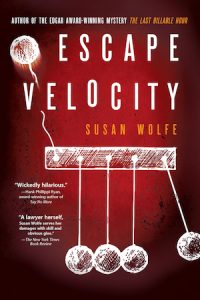
Steelkilt Press
TBD: What was the inspiration for Escape Velocity?
SW: Two-sentence synopsis: Escape Velocity is a wickedly hilarious* thriller about a reformed con artist in a Silicon Valley software company who decides to revive her con artist skills to straighten out her very screwed up company. She needs to get enough money to move out of her car and make a home for her little sister before it’s too late.
My inspiration for the book comes from my own work as a lawyer. I have spent most of my adult life practicing law here in Silicon Valley, partly in-house at several high-tech companies. I liked working in-house, but I sometimes got frustrated that a few people who worked for the company—from accounts payable clerks to highly paid executives—seemed unable or uninterested in doing their jobs. Due to incompetence or egotism or out-and-out self-dealing, some people just seem to burrow into a company like ticks on a tormented dog, and no amount of damage they cause ever seems to dislodge them. If you’ve every worked in a company, you’ve met these people!
So I thought the malfeasance and nonfeasance (as we say in the law) were interesting, and even entertaining in a nice black kind of way. I thought other people might like to know about the chaos, or if they already knew about it, they might like to know that somebody else had experienced it, too. After all, as C.S. Lewis said, “We read to know we are not alone.” I also thought people might enjoy seeing some incredibly annoying people get their comeuppance.
But then I needed a main character, and along came Georgia Griffin. She is young, inexperienced and from a completely alien environment, so she experiences the wonder that is Silicon Valley high tech right along with the reader. She is also highly intuitive and a little bit tougher than people around her might expect. She is blessed with a job that makes people underestimate her. She badly needs the company to succeed in order to realize her personal goal of finding a better life than the one she was born to, and she reluctantly decides to use her con artist training—sparingly—to help the company succeed.
The surprise to me was that Georgia’s moral and psychological complexities gradually became central to my story. Georgia wants to be a good person, but she does a few sketchy things. At one point I wrote out the fifteen points of Georgia’s moral code. She adheres strictly to her moral code, but it’s a little bit different from other people’s. (For example, “Point #13: Cause the least harm necessary to be effective.” ) So I ended up focusing on the question of whether Georgia succeeds in the effort to turn away from her con artist background.
*According to Hank Phillippi Ryan, award-winning author of Say No More
TBD: How has being a lawyer affected you as a writer?
SW: In some ways that’s hard to know since I’ve always been both. Here’s what I can say:
My books are shot through with my actual experiences as a lawyer. The most obvious impact is on my plots, but my experience also makes my dialogue authentic and helps me create a powerful sense of place.
I worried that my legal writing would make my fiction writing ponderous, but it turns out the two kinds of writing issue from different parts of my brain. So no recognizable impact of one on the other.
I do think being a lawyer has made me more precise, which creates a risk I will over-explain things “for the avoidance of doubt” as we sometimes say in contracts. I hope I fight this effectively.
Finally, I would say I’m a serious writer without being a literary one. I suspect lawyering makes me opt for clarity over poetry when a choice must be made.
TBD: How did you manage to juggle a legal career and a writing career, when both seem like ridiculously time-consuming jobs?
SW: Not. Very. Easily.
And you left out my third ridiculously time-consuming job, which was raising two daughters. For years I would lie in bed and look up at the ceiling thinking, “Baby, Book, Law. Baby, Book, Law.” I was determined to make them all fit.
There were times I did make them fit. I wrote my first book, The Last Billable Hour, when I had only my older daughter. I would write 15 hours a week with babysitting until we ran out of money, and then I’d go to work as a contract lawyer (by project or by the hour) until I had enough money to pay the bills. I got the whole book done that way, and it was a happy, productive time in my life.
The second book was more challenging. By then we had two daughters, and I had a much bigger job as the head lawyer of a company. I decided to go to Starbucks from 6am to 7:30am twice a week to work on the book, and my daughter Catherine, who was eight or nine at the time, decided to go with me. She would sit very quietly and focus on her homework so that I could concentrate. I loved those mornings, but then it turned out I didn’t have one single unstructured moment in my life and was going slowly berserk. So I gave up writing until I was ready to leave law entirely, which is when Escape Velocity finally got written.
TBD: How did you manage to get such great blurbs for your book?
SW: It’s interesting that you ask me that, because my editor Jared Kieling asked me the exact same thing regarding my first book. Answer: I asked people.
I asked them very humbly to consider this great favor for a fellow author.
I spoke to each author about why I admired his or her writing and why I hoped they would like mine.
I asked for three or four times as many blurbs as I actually got, and tried to remind myself not to take it personally if they refused or just blew me off. Writers (and professors and deans and chief lawyers of companies) are very busy people. Fortunately, many of them are also generous.
TBD: How does your title Escape Velocity relate to your story?
SW: In physics, escape velocity is the minimum speed a rocket ship needs to escape the earth’s gravitational pull. Here in Silicon Valley the term is used as a metaphor to describe the amount of money a start-up company needs in order to stop taking money from venture capitalists. The company’s founders try to achieve escape velocity from outside interference by becoming self-sustaining.
In my book, Georgia’s upbringing with her con artist father exerts tremendous pull over her, first because it’s the life she knows and feels competent to navigate, and second because she loves her father. As the story unfolds, the reader realizes she also rather enjoys the excitement. But she doesn’t want a con artist life. So a central question of the novel is whether she has the strength of character to achieve escape velocity from the only life she knows. I don’t think many people accomplish that, and I have been fascinated by readers’ varying opinions about whether she succeeds.
TBD: We hate to ask you this, but what advice do you have for writers?
SW: Elmore Leonard gave me the best writing advice I ever received, and I am happy to pass it along.
I had gone to his reading at a bookstore, and when it was time for him to autograph my copy of his book I asked him to wish me good luck with mine. He asked a question or two about what I was writing and then signed his book. After I turned to go he called after me, “Susan!”
I turned.
“Don’t let anybody else write your book. You write your own book.”
So there you are. Share your writing, read it out loud, listen to intelligent people’s advice, and then decide for yourself.
Susan Wolfe is a lawyer with a B.A. in literature from the University of Chicago and a law degree from Stanford University. After four years of practicing law, she bailed out and wrote her Edgar Award-winning first novel The Last Billable Hour. She returned to law for another sixteen years, first as a criminal defense attorney and then as an in-house lawyer for Silicon Valley high-tech companies. Her second novel Escape Velocity was published in October and just won the 2017 IPPY Gold Medal in suspense/thriller from the Independent Publishers Book Awards. She lives in Palo Alto, California with her husband Ralph DeVoe. authorsusanwolfe.com
Arielle Eckstut and David Henry Sterry are co-founders of The Book Doctors, a company that has helped countless authors get their books published. They are co-authors of The Essential Guide to Getting Your Book Published: How To Write It, Sell It, and Market It… Successfully (Workman, 2015). They are also book editors, and between them they have authored 25 books, and appeared on National Public Radio, the London Times, and the front cover of the Sunday New York Times Book Review.
JOIN OUR NEWSLETTER TO RECEIVE MORE INTERVIEWS AND TIPS ON HOW TO GET PUBLISHED.
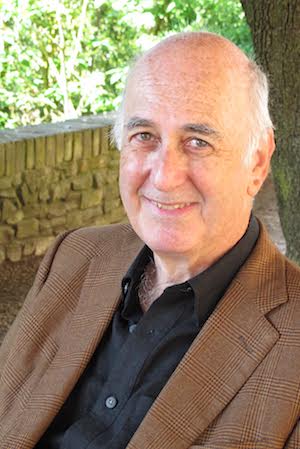
Phillip Lopate is one of the smartest guys we know–about books, about words, about literature, and, frankly, about life. So when we found out he had a new memoir coming out called A Mother’s Tale, we thought we’d pick his brain about why words and mothers matter.
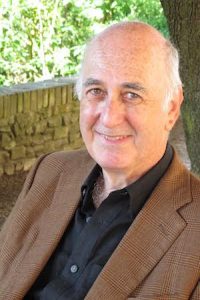
Phillip Lopate
The Book Doctors: What were some of your favorite books and authors as a kid, and why?
Phillip Lopate: As a kid, I was drawn to Robert Louis Stevenson’s Kidnapped, books about Greek mythology, and just about any nonfiction young adult book about baseball. I was not a very selective reader; I read just about everything in my local library. Taste came later.
TBD: How did you become a writer? Can someone actually learn to write, or are some people just born writers?
PL: I initially thought I was not smart enough to become a writer, but experimented with story-writing for my own amusement. I was the editor of my high school and my college literary magazine, which required a certain amount of posing and bluffing. Mostly what I was was a reader. I worshiped at the altar of literature. I do think it helps to have talent, but persistence matters more. Writers are made, not born.
TBD: Why did you choose to work with a university press for this book, which doesn’t seem inherently academic? We’re interested in the change in academic presses over the years and wondered if you could share your observations.
PL: I chose a university press because, frankly, a bunch of commercial presses passed on the manuscript, saying they weren’t sure how to sell it. Then I found out that Ohio State University Press was starting a new nonfiction/essay imprint, and I submitted it to them and they were happy to snap it up. You have to find a publisher who will love your book, whether it’s a trade or academic press. In these days when publishers are under so much pressure to make money, the line between commercial, academic and small independent presses is very thin. Any port in a storm, as they say.
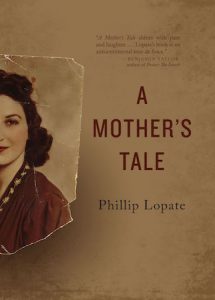
The Ohio State University Press
TBD: You wrote, “I was put on earth to understand my mother’s pain I have not gotten very far in the process.” I feel much the same. What did you learn about her pain writing A Mother’s Tale?
PL: I learned a lot about my mother’s range, and her alternation between being very shrewd and self-deluded. As for her pain, some people find tremendous animation in self-pity and rage: there’s not a lot you can do about it.
TBD: Does writing help you understand things you don’t know about yourself, other people, and the world?
PL: Writing certainly helps to understand myself better, as well as other people. I have only to start to explain something I’ve thought or done and I begin to get a whiff of defensiveness and alibi-ing. I just have to talk to myself on the page. Essays are perfect for that kind of back-and-forth, with a drive toward greater honesty.
TBD: I tried to talk with my mother about sex with very little success. What was it like hearing your mom talk about her sexuality?
PL: I cannot say it was much fun as her son hearing my mother talk about her sexuality. But in retrospect, I’m glad for her expressiveness and lack of self-censoring. I think it helped me to become a writer, and to appreciate that things are what they are.
TBD: Family secrets and lies seem to be a universal fact of life. What did you find out about yours?
PL: There is no getting around family secrets: every family has them. I learned a little more about my mother’s affairs and how my father responded to them. I also learned how my mother fit into her historical period, how she reacted to the big public events of the day.
TBD: Your mother seems to be such a larger-than-life character. How did her melodrama affect your personality development?
PL: My mother’s melodramatic temperament pushed me in the opposite direction: I became skeptical of Drama, and a bit clinical and detached. A spectator, in effect, with an aversion to tantrums.
TBD: How would you characterize the book’s genre?
PL: I would say it’s like a play, a dialogue between my mother and my younger self, with my present, older self commenting and kibbitzing.
TBD: We hate to ask you this, but what advice do you have for writers?
PL: Read a ton, and put in a thousand hours at your desk. Don’t get discouraged by what nay-sayers tell you. You’ll know when you’ve hit pay dirt.
Phillip Lopate is a central figure in the resurgence of the American essay, both through his best-selling anthology The Art of the Personal Essay and his collections Bachelorhood, Against Joie de Vivre, Portrait of My Body, Portrait Inside My Head and To Show and to Tell: The Craft of Literary Nonfiction. He directs the nonfiction MFA program at Columbia University, where he is Professor of Writing.
Arielle Eckstut and David Henry Sterry are co-founders of The Book Doctors, a company that has helped countless authors get their books published. They are co-authors of The Essential Guide to Getting Your Book Published: How To Write It, Sell It, and Market It… Successfully (Workman, 2015). They are also book editors, and between them they have authored 25 books, and appeared on National Public Radio, the London Times, and the front cover of the Sunday New York Times Book Review.
JOIN OUR NEWSLETTER TO RECEIVE MORE INTERVIEWS AND TIPS ON HOW TO GET PUBLISHED.
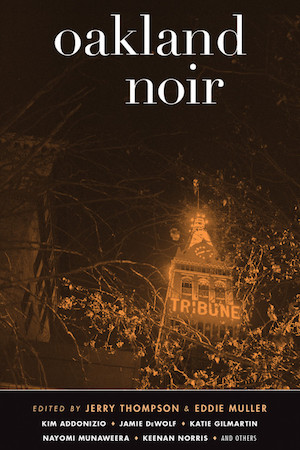
If you live in the Bay Area, which we did for many years, and you have a penchant for the dark side that draws you toward the underbelly of noir, you know Eddie Muller. He’s a legend. Let’s face it, you don’t get to be the Czar of Noir for nothing. So when we found out he was editing the new Oakland Noir, part of the great noir series by Akashic, we jumped at the chance to pick his dark brain about Oaktown, writing and the book business.
Read this interview on the HuffPost.
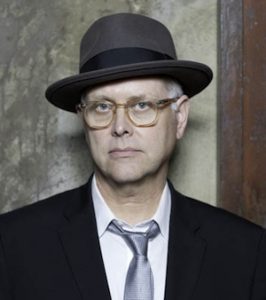
Eddie Muller
The Book Doctors: What are your earliest memories of being interested in noir? What were some of your favorite noirish books when you were going up, and why?
Eddie Muller: I’m of an earlier generation, pre-VCR. I was first drawn to noir by movies I’d see on Dialing for Dollars, weekdays afternoons when I’d cut school. Stuff like Thieves’ Highway and Cry of the City and The Big Heat. I started combing TV Guide to find movies with “Big,” “City,” “Street” and “Night” in the title. There’s a title: Big City Streets at Night. I’d watch that. The look of the films and the attitudes of the characters resonated with me. I was at the epicenter of the hippie movement in San Francisco, but I was intrigued by this earlier generation’s style and attitude.
In high school I started reading Raymond Chandler and Dashiell Hammett, and the die was cast. In that way, I’m like virtually every other crime fiction writer. It’s amazing the influence those guys had, especially Chandler. His prose was intoxicating. Reading Hammett’s short stories made you want to be a detective. Reading Chandler made you want to be a writer. After that, you just start devouring everything. At a certain point I began distinguishing between mystery writers and crime writers. And I became less interested in the detective whodunnits and more fascinated by the noir stuff: Patricia Highsmith, Jim Thompson, David Goodis, Charles Willeford. Their books don’t resolve neatly. Things aren’t going to end well.
TBD: What are you currently reading?
EM: I’m looking forward to a couple of days off so I can read Paul Auster’s latest, 4321. I’ve seen some discouraging reviews, but I read everything of this. He’s my favorite living author. I enjoy how his mind works and I like how he translates it to the page.
TBD: What are some of your favorite noir classics, and again, why?
EM: Derek Raymond’s Factory series books are pretty great, especially I Was Dora Suarez. He really turned detective stories into noir literature. Forgive me for touting the obvious touchstones: Hammett’s big three: Red Harvest, The Maltese Falcon, and The Glass Key. Chandler’s The Long Goodbye. Here’s the thing about crime fiction: you end up loving a writer’s body of work more than a single book. I like reading David Goodis, but I can’t say I like Cassidy’s Girl more than Nightfall. Same with Jim Thompson. Charles Willeford, The Burnt Orange Heresy. I like Highsmith’s Ripley novels. I like Highsmith in general. She still doesn’t get her due because, obviously, she was a woman writing in what’s perceived as a man’s genre. I had that bias once, as a younger and stupider man. Then I wised up. More guys should wise up.
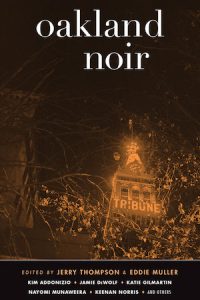
Akashic
TBD: Having been published in San Francisco Noir, part of the Akashic series, I’m a big fan of these books. How did you become involved with Oakland Noir?
EM: Well, we were both in that San Francisco noir collection! I was sort of wondering when Johnny Temple, Akashic’s publisher, would get around to Oakland. I mean, seriously, how can you have Duluth Noir before Oakland Noir? As it turns out, Jerry Thompson, who’s a writer and bookseller in Oakland, had pitched Johnny on an Oakland Noir collection but hadn’t gotten a green light. Then Jerry approached me about co-editing the anthology—and I guess because Johnny and I had some history we got the go-ahead.
TBD: What was it like editing all these amazing writers?
EM: It was great! Jerry and I shared a vision of what we wanted the book to be—an accurate demographic reflection of the city. Meaning we wanted an appropriate gender/racial/ethnic mix to the stories. Which can be tricky. You want good well-conceived, well-written stories, not just stories featuring a black or Asian or Hispanic character. Let’s be honest: it’s a crap shoot. Jerry did the hard work of selecting most of the contributors, because he knew the literary landscape of Oakland; I pulled in a couple of my buddies, Kim Addonizio and Joe Loya. We had a vision of how the book should play out, but you can’t tell writers what to write. In the end, I was happy with the result. The reviewer for Publishers Weekly complained that some stories weren’t really noir, but the Kirkus reviewer understood completely: our mission was to reveal the city beneath the mainstream perceptions, to use genre fiction show sides of Oakland not usually seen.
TBD: What do you think separates great noir from everyday pulpy potboilers?
EM: Empathy. Great noir writing makes you feel and contemplate lives gone off the rails. That’s not entertaining for a lot of people, but to me it’s one of the purposes of art.
TBD: What exactly is a noircheologist? (Spell check really hated that word!)
EM: I dig through the past to rescue and revive this stuff. That’s the mission of the Film Noir Foundation, which I founded in 2006. We rescue and restore films, specifically noir, that have slipped through the cracks and disappeared. There are a lot of savvy small publishers who are noircheologists on the literary side, but I’m the guy when it comes to film. We recently resurrected a terrific 1956 noir film from Argentina, Los tallos amargos (The Bitter Stems), and preserved a sensational picture from 1952 called El vampiro negro; it’s an Argentine reworking of Fritz Lang’s M. I’m on a crusade now to show that film noir was not specifically an American thing.
TBD: You have one of the coolest nicknames around: “The Czar of Noir.” How did that come about? And how can I get a nickname that cool?
EM: A woman named Laura Sheppard, event coordinator at the Mechanic’s Institute Library in San Francisco, was introducing me one night. She was reading the far-too-lengthy bio I’d supplied—you do that when you’re young and trying too hard—and, frankly, I think she just got tired of it. So she said, “Hell, he’s just the czar of noir.” It’s been the gift that keeps on giving. If you want a cool nickname, I can put you in touch with Laura.
TBD: Will you ever get tired of noir?
EM: I don’t think so. Not once I realized there was far more to it than what was ascribed by the original scholars on the subject. It annoys some purists when you stretch the boundaries, but who cares? We sold out a week of shows at the Museum of Modern Art in New York presenting virtually unknown film noir from Argentina. Akashic’s Noir series has been a fabulous way of getting new writers published and providing a valuable anthropological–literary experience. There’s been a long overdue rethinking of this terrain as strictly a male-only province. All good, as far as I’m concerned.
TBD: We hate to ask you this, but what advice do you have for writers in general, and writers of noir specifically?
EM: Understand that noir is not about the body count. It is often about violence—the psychological pressures that lead to it, and the inherent drama in trying to stem the tide. It bothers me when books and films featuring ugly people engaged in relentless killing are described as “noir.” It’s not. Those are just Tom and Jerry cartoons for post-adolescent boys. Not entertaining to me, and not of any significant value to the culture at large. I guess my advice would be “Aim a little higher.”
Eddie Muller is the world’s foremost authority on film noir. As founder and president of the Film Noir Foundation he is a leading figure in film restoration and preservation, and a familiar face and voice on the international film festival circuit, DVD special features and Turner Classic Movies, where he hosts Noir Alley every Sunday morning at 10am EST.
Arielle Eckstut and David Henry Sterry are co-founders of The Book Doctors, a company that has helped countless authors get their books published. They are co-authors of The Essential Guide to Getting Your Book Published: How To Write It, Sell It, and Market It… Successfully (Workman, 2015). They are also book editors, and between them they have authored 25 books, and appeared on National Public Radio, the London Times, and the front cover of the Sunday New York Times Book Review.
JOIN OUR NEWSLETTER TO RECEIVE MORE INTERVIEWS AND TIPS ON HOW TO GET PUBLISHED.
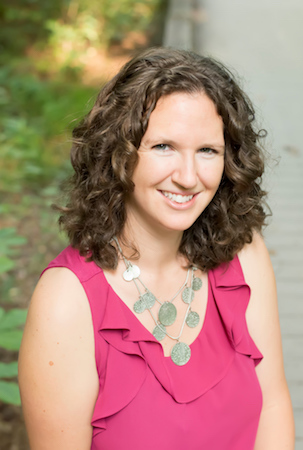
We first met Kris Spisak at the awesome James River Writers Conference. (Yet another reason to attend writers conferences!) We were immediately impressed by her professionalism, generosity, goodwill, and great hair. She’s been at this for a long time, and now that her book Get a Grip on your Grammar: 250 Writing and Editing Reminders for the Curious or Confused is out, we picked her brain on what it takes to get successfully published.
Read this interview on the HuffPost.
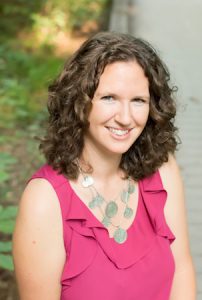
Kris Spisak
The Book Doctors: Why in heaven’s name would you want to become a writer?
Kris Spisak: There’s not a question of wanting to be a writer. Everyone these days is a writer. Whether you’re writing the next bestseller, an email to your boss, a manifesto on social media, or a note to your child’s teacher, you are a writer. Communication is a part of our everyday lives, whether we appreciate it or not. I contend, no matter how it is that we use our written words, it’s time we step up our game.
TBD: When you were a kid what were your favorite books, grammatically?
KS: I didn’t care about grammar when I was a kid any more than anyone else. If I was a kid in today’s generation, maybe I’d simply appreciate the semicolon for its versatility in winky-faces. Coming to appreciate the subtleties in language arose somewhere later around a fascination with what a single writer can achieve with well-designed words. I wanted to see how that was done.
TBD: What inspired you to write a book about grammar?
KS: Words matter. You could argue that how we use our words matters more today than ever before. Everyone has a voice, so why not use it? And if you’re going to use it, use it well.
So many books about business writing etiquette, bettering communication skills, and grammar rules are as dry as we remember from pre-adolescence. I wanted to create a writing resource that was jargon free, easily digestible, and written with a sense of humor. Get a Grip on Your Grammar is a writing resource for those moments of temporary bewilderment and for those moments we all want to show off our absolute best.
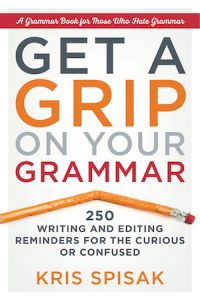
Career Press
TBD: Why is grammar important?
KS: Grammar is important because clarity is important. The world will never know the brilliance inside your head unless you can craft it with precision. This is true for fiction writers, journalists, composers of academic essays, and business communicators alike.
Grammar ignorance isn’t bliss; it can be devastating. A weak understanding of English language use is the cause of missed job opportunities, lowered grades, love poems gone wrong, and certainly rejection letters from publishers. Getting a solid grip on your grammar can impact a life for the better. Even being a writer and an editor, I don’t think I’m biased when I say that.
TBD: What are some of your grammatical pet peeves?
KS: Of course I have personal pet peeves—“further” versus “farther,” for example, or “nauseous” versus “nauseated”—but I’m not one to go around correcting people’s English unless they are asking me to. When they ask me to, oh, I can have some fun, but no one likes to be torn down for simple mistakes.
TBD: What do you want people to take away from this book?
KS: Grammar isn’t something to be intimidated by or to be snobby about, and it certainly isn’t something to fight over. There are simply lessons that remain untaught or unsolidified in people’s minds. English might be our native language, but that doesn’t mean we understand it as well as we should. We are all human, and the English language is hard. We rush our communications because we live busy lives; however, what is more important than our expressions of our ideas? Personally, professionally, and creatively, there’s room for us all to do so much better.
TBD: What effect has Twitter had on grammar?
KS: You can look at Twitter and text messages and see the downfall of grammar and punctuation, or you can realize that people are communicating more than they ever have in human history.
TBD: Does being a grammar expert help or hinder you as a creative writer?
KS: As a fiction writer, I leave my editor self behind as I craft my early drafts. If I worried about perfection with every word and squiggle of digital ink, I would never get to that final page. When I do get to the editing, my process may be meticulous, but forcing myself to pay attention to every single word choice creates a manuscript that is fine-tuned when I get there.
TBD: What is your next project?
KS: The project that became Get a Grip on Your Grammar has had an interesting journey from a weekly writing tips blog to an indie published ebook to the literary-agent-represented, traditionally published book that it has become. That weekly writing tips blog continues on kris-spisak.com, and I’m having more fun with it than ever.
As for other projects, I have two novels in the works, which I hope to find homes for in the near future, and I don’t think my non-fiction side is anywhere close to finished. I have a new grammar-based project that’s bubbling in the back of my mind, as well. Stay tuned for that.
TBD: We hate to ask you this, but what advice do you have for writers, and for the grammatically challenged?
KS: No matter how well educated or how confident we may be, our writing skills can always be better. Writing is a craft to practice and improve. The more we draft our written words, the stronger that they will become. And if someone happens to be looking for a resource, Get a Grip on Your Grammar: 250 Writing and Editing Reminders for the Curious or Confused is now available from your favorite bookseller.
With degrees from the College of William & Mary and the University of Richmond, Kris Spisak began her career as a college writing instructor; however, after six years in the classroom, she transitioned to professional writing and editing. Helping writers sharpen their craft was the driving force behind her book, Get a Grip on your Grammar: 250 Writing and Editing Reminders for the Curious or Confused (Career Press, 2017), and the creation of her writing program, Grammartopia. Kris is also pursuing the publication of her first novel and is the co-founder of Midlothian Web Solutions.
Arielle Eckstut and David Henry Sterry are co-founders of The Book Doctors, a company that has helped countless authors get their books published. They are co-authors of The Essential Guide to Getting Your Book Published: How To Write It, Sell It, and Market It… Successfully (Workman, 2015). They are also book editors, and between them they have authored 25 books, and appeared on National Public Radio, the London Times, and the front cover of the Sunday New York Times Book Review.
JOIN OUR NEWSLETTER TO RECEIVE MORE INTERVIEWS AND TIPS ON HOW TO GET PUBLISHED.
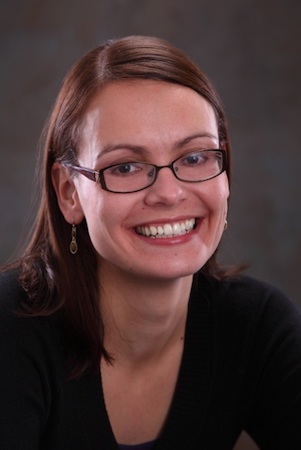
The Book Doctors: Anna Staniszewski on MFAs, Writing, and Not Teaching Kids Stuff in Your Kids’ Book
Anna Staniszewski is one of our daughter’s favorite authors. Our daughter is nine, with great taste in books, so we always pay very close attention to who she’s loving as a middle grade reader. We were all lucky enough to meet Anna at least year’s New England SCBWI Conference and had the chance to pick her brain after about writing, writers, MFA programs, kids’ books, and whatever else spilled out of our collective heads.
Read this interview on the HuffPost.
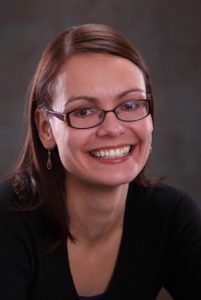
Anna Staniszewski
The Book Doctors: I’d like to start with the MFA programs, because we hear such conflicting things, particularly for children’s book writers. What are the benefits of going to a program like the one at Simmons College where you teach?
Anna Staniszewski: I hear that question a lot. For me, I think that it comes down to two things. If you want to be a published writer, you have to put in the work. Some people need a structured environment like an MFA program. I know I did. For other people, they can do it on their own. Another benefit of having an MFA program is the community aspect of it. You have this network that you’re part of—people with similar interests and goals. Some say you can’t be taught to write. While I think ultimately the actual storytelling voice is hard to teach, I obviously believe that you can teach someone to write, because I attended an MFA program and I teach in one.
TBD: What kinds of things do you actual teach in an MFA program for children’s literature?
AS: When the students come into the MFA program at Simmons, we really break down the basics. We look at character, plot, structure, setting, all those things, which seem really basic because we do so many of them by instinct, because we see how they work in other people’s stories. But if you really break down how they work, then you can take them and use them in your own story. The more aware you are of the different building blocks of fiction, the more consciously you can use them to benefit the story that you’re working on.
TBD: What was the transition like going from student to published author to teacher?
AS: When I first started at Simmons, I originally went for the MA of Children’s Literature. I wasn’t quite sure what I wanted to do. I thought I wanted to go into publishing. But my first semester there they were just launching that MFA program–this was over ten years ago–and so I thought that’s exactly what I want to do, I want to do both those things. Once I knew that, I was really focused throughout that program on wanting to be published when I graduated, and then when I finished, I actually applied to the Writer Resident Program at the Boston Public Library and, miraculously, got it the next year. Right after I graduated I was a writer-in-residence at the BPL, which was amazing. I think that really gave me such a boost of confidence that writing could be a real job for me! Right after I finished at the BPL, I went to teaching. Originally, for the first year that I taught, I taught all over the Boston area. I was really lucky when an opening popped up in Simmons, where they needed someone to teach in the MFA program, so I was able to do that right around the time that I got my agent. That was interesting to go through the submission process all while I was teaching other students who were trying to get to the same point.
TBD: One thing that we run into all the time is that people think that it is easier to write a children’s book than an adult book, particularly when it comes to picture books, and what I find amusing, in terms of length of time, is that it takes longer to publish a picture book than it does any other kind of book that I’ve ever seen.
AS: Absolutely! I sold my first picture book in 2011, and it is coming out in 2017. It was a long process! (Even though book publishing is a slow process, it’s rare for a book to take this long.) I think because there are so few words, you have to pick the exact, perfect words for every spread. And then there’s this whole other element if you’re not the illustrator and you just have to wait and hope that it all comes together! Writing picture books is such a specific craft, I was actually a little bit intimidated by it for a while. For me, writing a novel somehow feels less scary.
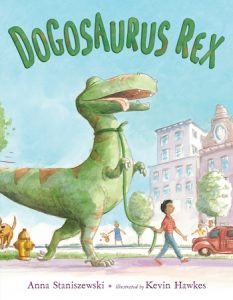
Holt Books for Young Readers
TBD: For those writers out there who really know nothing about the craft of picture books, do you have a few tips?
AS: I would say the big thing is thinking about what would you like to see illustrated because I think a lot of times you’ll have a certain idea of “wouldn’t this be cute” and “wouldn’t this be fun,” but then you really have to think, “Can I get several illustrations out of this?” Then there are the parts of your book that not only could be illustrated, but also are begging to be illustrated! That’s why you need to find an idea that doesn’t just resonate with people, but that’s demanding to be illustrated.
The other thing I often tell students, because this is true of my own experience, is that an idea is not a story. The picture book I mentioned that’s coming out in 2017–the one that took six years–that was one where it took me a good year to find what I was actually trying to say. I came up with the idea, “Oh, wouldn’t it be fun if a boy turned a dog into a dinosaur?” And so I kind of played around with it, and it just wasn’t really working. I think part of it was because I wasn’t really thinking about the illustration potential. But I think a bigger part of it was that while it was a fun idea, it wasn’t really a story. And so I had to really dig into it. It took me a while to find what it needed to be about, which was the relationship between the boy and what turned out to be just a dinosaur.
Probably the most important thing in a picture book is the emotional component to the story. Because picture books are so short, there’s so little time to get the point across. You need something readers can really connect to on an emotional level because otherwise it’s just a fun story and you forget about it. But if there’s that deeper emotional layer, then readers will come back to it over and over.
TBD: We love that last one! We do a lot of work with writers to try to help them figure out how to pitch their books, and many writers have tremendous difficulties doing this. We get so many pitches where we don’t see an emotional connection with their main character. They just have an idea, there’s no actual plot or story there.
AS: It’s true, because by the time you finish reading a story, if there’s no emotional component and there’s no real plot, you find yourself asking, “Why did I just read this?” There has to be something there, even if it’s not a traditional story arc. My picture book, Power Down, Little Robot, is not a traditional story arc. It’s about a robot that doesn’t want to go to bed. It tries out all these different things to prevent going to bed, so it’s more like a list-type story. But I really try to highlight the mother-son relationship there. I hope, by the end, readers feel changed by the story, even if it doesn’t have a traditional beginning, middle, and end.
TBD: It’s confusing to many people who are starting out in the field what the category Middle Grade even means–the age range, where it diverges from early reader, how it stretches up to YA but doesn’t cross over into it. Can you give us your thoughts on this?
AS: I get this question all the time as well. I think people define it slightly differently, but this is how I think about it. I think the characters are typically between the ages of eight and twelve or thirteen. There are also early chapter books, and I do include those in early middle-grade, so in early chapter books, the protagonist can sometimes be in second grade or age seven. But a lot of early readers of chapter books are very much riding that line between picture book and novel. So I look at early chapter books on a case-by-case basis to know where exactly those fall. I feel like once you get into high school, that’s where it gets tougher. In my novels, most of my characters are thirteen or fourteen, which is at the upper end of middle-grade, often referred to as “tweens.” And even fifteen years ago, those would have been published as YA. Because YA has aged up so much, middle-grade has had to expand a little bit and the characters have become a little older.
While part of the way I define middle grade is by age, part of it I define by focus. It’s not only the content, but also how you deal with the content. So in middle-grade, if it’s younger middle grade, you might get away with a little bit of romance, but there are a lot of kids who don’t want that in their books. Whereas if it’s upper middle-grade, you might see a little bit of romance and you might see some darker things like war and death. With the latter, they tend to be handled a little bit more in the background or off-screen, so they are certainly there and they’re impacting the main character, but not in a direct way. For example, if there’s a character with something very serious going on in her life, maybe that’s not happening to the main character, it’s happening to the main character’s friend or somebody else in the family. In middle grade, you’re still kind of discovering what the world is like, whereas in young adult, I’d say it’s “Now that I know what the world is like, how do I fit in?” In YA, the focus is more inward, where middle-grade is more outward.
TBD: In your bio you write, “When she’s not writing, Anna spends her time reading, daydreaming, and challenging unicorns to games of hopscotch.” We thought this was so funny, and it’s just the sort of thing our nine-year-old daughter would love. Speaking of our nine-year-old daughter, she loves your books so much and just had the experience where she sat down with The Dirt Diary and couldn’t get up until she finished. You captured something that felt grounded in reality yet she could fantasize. How do you come up with your stories? Are they things that just come to you, or are they things you’ve been thinking about since you were little?
AS: I feel that I never have a lack of ideas. I feel like my brain is open, that it’s always asking “What if this happened?” I’m always kind of twisting the things that I notice, and thinking about “What if I told it this way?” Then it’s just a matter of figuring out what am I most excited about, and that’s what I decide to write about. But sometimes I feel like the process is a little bit mysterious. With my first book, My Very UnFairy Tale Life, I was working on something completely different. I was working on a sort of depressing book that ended up not going anywhere, and I needed something fun to work on. So I sat down and I just thought “Okay, I’ll just write a fun scene, just for myself,” and I wrote a scene about a girl who came home from school to find a talking frog sitting on her bed, and if that was me, I would have screamed and run out of the room, but she was so annoyed at the sight of the frog, and she actually grabbed that frog and she threw it out a window. I thought, “Who is this character? I need to know more about her!” I would write a chapter or two every once in a while, just for my own amusement, and that’s how that book came about. With my book The Dirt Diary, I heard a story on the radio about a girl who used to work for her mom’s cleaning business and a bell went off in my head. So for me, the premise comes first a lot of times, but it’s not until I connect with the characters that I go with it.
I feel that what you were saying about being rooted in the real world with a little bit of fantasy or magic, those are the kinds of stories I’ve always loved the most, and so I feel like that’s what I most enjoy writing as well.
TBD: We were impressed with how you dealt with class issues in The Dirt Diary. Our daughter happens to be in a public school that is very mixed, class-wise, from the very top to the very bottom. We were happy to see her reading a book that made her think about class. Speaking of which, your dedication may be our favorite ever: To anyone who has ever had to clean a toilet.
AS: I always thought I’d write fantasy. I wasn’t sure I had realistic fiction in me until I started writing it. For me, I guess what helped me was that I felt like my entire middle school existence could be summed up in the word “embarrassed.” I was nothing but embarrassed all the time. I also needed to know “Where do I fit in?” So a lot of those class issues are things that I experienced in school, where there were kids who lived in the big fancy houses and their families had big fancy cars, and then there were the rest of us. There was a lot of pressure no matter where you were on that hierarchy, and I thought that was something worth exploring. It also felt very true to my character because of the situation I put her in, and it also felt very true emotionally for me. A lot of people ask me how much of that story comes from my personal experience, and it’s very little. I did not clean houses for a living. I try to avoid cleaning houses at all, even my own. But I feel the emotional element is very true to life, and so I feel like I took a character who is very shy and very awkward, and took those qualities from myself when I was her age and amplified them by ten.
TBD: Something we run into every day with clients trying to get children’s books published is the desire tell us what their book is trying to teach. I would love for you to say something about the didactic nature of children’s books, and what do you advise on that?
AS: I think the important thing is telling a good story, and if there’s something that comes out of that for the reader, that’s fantastic, but if that’s the aim–if you go into it looking to teach something—it will show. The story always has to come first. When I set out to write a book, I’m not thinking what I want the reader to learn, or what do I want the character to learn, I just focus on something much more simple, like how does the character change. I try to think of it in a very specific way. With The Dirt Diary, for example, it’s about a character finding her voice. Though that may imply that maybe she learned some things along the way, that’s not what the story is really about. I think about: “Where does she start?” She’s shy, she can’t speak up for herself. “Where does she end?” She comes out of her shell a little bit, she speaks up for herself, at least when she really needs to. I’m not just trying to hit the reader over the head with a lesson or a moral. As a reader, I like to be able to think about the book myself and also feel like I have grown and changed along with the character; that’s more valuable than having a very obvious and concrete lesson.
Anna Staniszewski is the author of several tween novels, including The Dirt Diary and Once Upon a Cruise, and the picture books Power Down, Little Robot and Dogosaurus Rex. She lives outside of Boston and teaches at Simmons College. When she’s not writing, Anna spends her time reading, daydreaming, and challenging unicorns to games of hopscotch. You can learn more about her and her books at www.annastan.com.
Arielle Eckstut and David Henry Sterry are co-founders of The Book Doctors, a company that has helped countless authors get their books published. They are co-authors of The Essential Guide to Getting Your Book Published: How To Write It, Sell It, and Market It… Successfully (Workman, 2015). They are also book editors, and between them they have authored 25 books, and appeared on National Public Radio, the London Times, and the front cover of the Sunday New York Times Book Review.
JOIN OUR NEWSLETTER TO RECEIVE MORE INTERVIEWS AND TIPS ON HOW TO GET PUBLISHED.
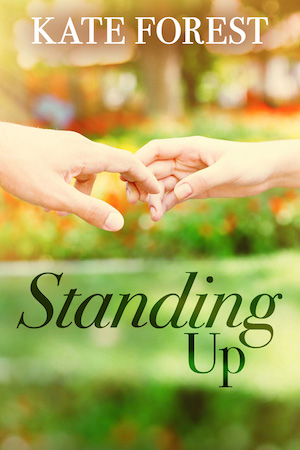
We’ve known Kate Forest for many years, and it’s been a joy to watch her come into her own as a writer. She has an unusual book out now, and we wanted to pick her brain about how she came up with this fascinating twist on the classic romance.
Read this interview on the HuffPost.
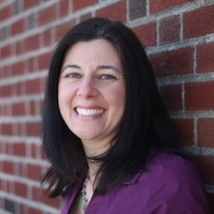
Kate Forest
The Book Doctors: Why did you do something as silly as decide to become a writer?
Kate Forest: I wish I weren’t a writer. I’ve always been the storyteller of the family (some of the stories were even truthful). I felt compelled to write them down a few years ago. I didn’t have plans to publish at first. But I’m also too ambitious for my own good.
TBD: What are you reading these days? What were your favorite books growing up, and why?
KF: Growing up was tough in terms of books.I didn’t learn to read until I was about 11 years old. Not only did I miss out on all the Judy Blumes, but school was a very painful place. I had the fortune of getting some extra help in 6th grade. One day I looked around the reading group I was in and noticed I was with the smart kids. I immediately went to Sherlock Holmes (still some of my favorite stories).
Now, I love reading romance of any kind. Devouring Amanda DeWees, Veronica Forand. And I love non-fiction. Isaac’s Storm by Erik Larson is on the top of my Kindle now.
TBD: How did you learn to be a writer?
KF: Trial and error. My sister, Andrea Pyros, is the real writer of the family, and she was kind enough to not laugh too hard when I said I was going to write a book. I took classes at my local community college, read books, and attended conferences, online classes, and workshops. I came from a place of knowing that I didn’t know anything and felt no shame in starting from scratch at 40 years old.
TBD: What drew you to romance writing?
KF: I need a happy ever after in my fiction. Because of my work as a social worker, I’ve never been able to read those wonderful weepy Oprah Book Club books. When Precious came out, I couldn’t look at that as entertainment, since foster care was my day job. Fiction, for me, needs to be an escape. And I’d better be emotionally satisfied at the end or I’ll hurl the book at the wall. For non-fiction I can be forgiving.
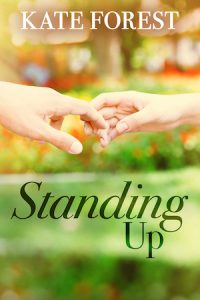
Ruby Basset Publishing
TBD: Tell us what your new book, Standing Up, is about.
KF: It’s the classic nerd/jock story but with a twist. Mike was the star football player in high school. A car accident lands him on crutches in excruciating pain, and he elects to have his legs amputated below the knee. Jill is a woman determined to get to NASA but finds it hard to stand up for herself in a man’s world. It’s more a story of finding your identity than a straightforward romance.
TBD: They say, “Write what you know,” but you’ve never had an amputation. How did you get into the mindset of someone missing a limb? There’s so much attention being paid to ensuring that genuine experience dictates the content of books like this. How did you make sure that your writing was real?
KF: If I only wrote what I “know” all my characters would be middle class Jewish cis-gendered women. I am in complete agreement that representation matters. We need diversity in books, not just in the characters depicted, but also among the authors. That said, I think I did my due diligence. I interviewed amputees and people with disabilities. I met with a prosthetics expert, had sensitivity readers, and relied on my professional experiences. This story is not going to be true for everyone with limb loss because not everyone with limb loss has the same experience. But it could be true for some. And not everything the characters think and feel will sit well with everyone. Just because one of my characters says something insensitive doesn’t mean that it’s my personal belief. I hope people see the evolution of the characters.
TBD: It’s unusual to see an amputee in a romance novel. What prompted you to write something like this?
KF: I was tired of all the “perfect” characters in romance. Their only flaws being they are “too smart,” “too wealthy,” etc. I meet people all the time who find true lasting love, and they are far from perfect. We all need love stories. We all deserve a happy ever after.
TBD: How did being a social worker impact how you wrote this novel?
KF: I’m a storyteller, but I’m also a listener. If I had a superpower it would be empathy. It takes a lot out of me to sit with someone through their pain. To be present and hold them in that space. That’s the job of a good social worker. To offer the non-judgemental support and advocacy. I’ve been telling people’s stories through court reports, case files, and hospital notes, always with the conviction to get the person what they need.
TBD: How long does it take you to write a book?
KF: Too darn long. I am a painfully slow writer and an even slower editor/reviser. I can’t plot a book at the beginning. I have some vague idea of what will happen. Mostly, I have a clear idea of who these characters are. I just let them play on the page. I end up deleting many, many wonderfully written pages that are absolutely useless.
TBD: We hate to ask you this, but what advice do you have for writers? For romance writers?
KF: A good story has terrible conflict. You can’t be afraid to put your characters through hell. They should be at the place where everything is hopeless. It’s really hard to go there. None of us want to think about being hopeless. But that’s the desperation the characters need to feel. Otherwise, the story isn’t compelling.
Author Kate Forest has worked in a psychiatric hospital, as a dating coach, and spent a disastrous summer selling above-ground swimming pools. But it was her over 20-year career as a social worker that compelled her to write love stories with characters you don’t typically get to read about. She lives in Philadelphia with her husband, two kids, and a fierce corgi. Learn more at kateforestbooks.com.
Arielle Eckstut and David Henry Sterry are co-founders of The Book Doctors, a company that has helped countless authors get their books published. They are co-authors of The Essential Guide to Getting Your Book Published: How To Write It, Sell It, and Market It… Successfully (Workman, 2015). They are also book editors, and between them they have authored 25 books, and appeared on National Public Radio, the London Times, and the front cover of the Sunday New York Times Book Review.
JOIN OUR NEWSLETTER TO RECEIVE MORE INTERVIEWS AND TIPS ON HOW TO GET PUBLISHED.
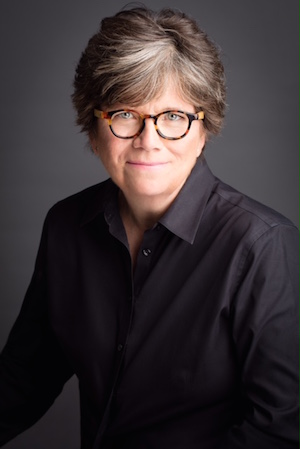
The Book Doctors: Joan Garry on Writing, Nonprofits, Online Platform Building and Bringing the Funny
We first met Joan Garry through Susan Weinberg, the publisher of Perseus Books Group. Joan was whip smart, pistol sharp, savvy, funny, altogether awesome, and shockingly humble. We would never have guessed that she is a top dog when it comes to consulting with nonprofits. And her website is of-the-charts excellent. It almost didn’t matter what her book was, we knew she had the goods necessary for success. Now that her book Joan Garry’s Guide to Nonprofit Leadership is out, we wanted to pick her brain about books, writing, and nonprofits.
Read this interview on the HuffPost.
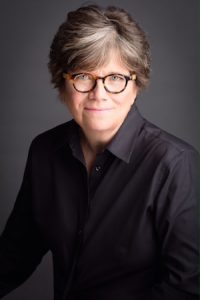
Joan Garry
The Book Doctors: There are other books on the subject of nonprofit management. Without an apparent hole in the market, how did you distinguish your book from what was already out there?
Joan Garry: You’re absolutely right – there are plenty of books about nonprofit management, but none that focus on what I call “shared leadership,” which is a challenge and opportunity quite unique to nonprofits.
What I mean is, there are books written for staff executives and resources galore for board leaders. But the reality is neither can be effective without the other. Nobody else has written about them as co-pilots of the same jet. If we don’t treat board chairs like they are in the cockpit, they won’t lead. This book is written for nonprofit leaders – the paid AND the unpaid.
I also found that a number of important topics were conspicuously absent. For example, storytelling plays an absolutely critical role in successful nonprofit leadership. A nonprofit ambassador who can tell a compelling and emotional story can invite folks to know more and do more. Crisis management is another missing topic. Far too few organizations are ready should a crisis strike.
Finally, I tried to bring a real sense of humor to the book. A lot of the book touches on personal experiences I had as a nonprofit Executive Director, a board leader, a donor, and a volunteer. I just had so many great stories to share and these stories are what make the book unique and fun to read – not just practical, though it is that too.
TBD: One thing about your book that’s different from the others out there is your voice. Why is the voice of your book important? For others writing books based on their business, what advice can you offer about bringing your voice into your book?
JG: I’m lucky. I write the way I speak and so folks say reading my work is like hearing me chat with them. My voice is informed by having played every position on the nonprofit field, so I have stood firmly in the shoes of my readers. I have personally experienced many of the same issues and concerns they have – good and bad.
Most nonprofit leadership books tend to be pretty clinical and instructive. That’s not necessarily a bad thing, but that’s not the book I wanted to write. I wanted to demonstrate the joy that the best leaders bring to their work. And it’s a short ride from joy to humor. And there’s plenty of humor in my book. I just think that makes it a lot more fun to read, which ultimately makes it easier to absorb the material.
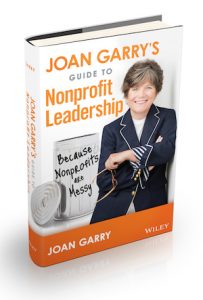
WILEY
TBD: You have an incredible team that works with you. How did this team help you get your proposal, book, and your marketing done? Why is it important to have a team?
JG: Some people have a family business – I call mine a ‘chosen family business’ – a small team of colleagues who are smart and dedicated to the work we do. Each of us is clear that we are advocates for the success of nonprofit leaders and we always keep our eye on what we believe would be most helpful to the folks we serve – staff and board leaders. We each brought something different to the development of the book proposal to chapter editing to marketing the book. The brand, the audience, the strategy to reach that particular audience, the content. Each of us were advocates in each of these areas. There’s no way I could have done all this by myself.
TBD: When we first met you, we were really struck by your website. We’ve continued to be so impressed by all your social media — particularly your newsletters. How did you develop your digital platform? What are some things that have worked, and what are some things that haven’t?
JG: I started to build my digital platform in late 2012. One of the best business decisions I ever made was hiring my digital strategist, Scott Paley at Abstract Edge. When I first reached out to him, based on a recommendation I got from somebody else who had worked with his company, I told him I needed a new website for my consulting business. That’s all I thought I needed. What did I know? In our very first conversation, he gave me a vision for what could be – a much bigger vision that I had imagined.
That conversation ultimately led to my blog, my social media, my podcast, my gig as a panelist on NBC’s Give (the first network TV reality show about nonprofits), my upcoming online education platform, and even the opportunity to have a major publisher interested in publishing my book. Now, whenever I write something online, tens of thousands of people read it! Not surprisingly, my consulting practice completely took off. It’s just amazing.
The biggest thing about this platform is that I just focus on helping people. I recently had Adam Grant on the podcast. He’s the author of a best selling book that’s all about “givers” and “takers”. His philosophy has been a big influence. Everything I do online is about giving. I never worry that I’m giving away too much. I really think that’s been the secret.
Most of what we’ve tried has worked very well. The one exception was a couple years ago we built an area on my website called “The Couch.” It was a place where nonprofit people could anonymously vent about their frustrations and others could sympathize. After a couple of months, we realized that it was too negative and we shut it down. But I don’t view that as a failure at all. It taught us a lot about what “Joan Garry” stands for as a brand and how important it is for all of our media to be on brand.
TBD: What did you find challenging about turning your business into a book?
JG: So much of what I do with my clients is teach. I’m an educator. I think writing the book was easier for me because of that and because of how much I’ve already written on my blog. The blog is a place where I can formulate my ideas and get them down in writing and get feedback from literally thousands of people who understand exactly what I’m writing about. The blog is an amazing crucible for me in that sense and the outcome of all that thinking and all that feedback is this book. Without that, it certainly would have been much more challenging to write.
TBD: Did you find that writing a book helped you with your business?
JG: I’ll let you know in about 6-9 months. J
But I will say that the process of writing the book has helped me to organize some of what I teach my clients in new ways I hadn’t previously considered. So in that sense, absolutely it has helped.
TBD: Your book is officially published on March 6, but you’ve been so successful in garnering pre-orders. Can you tell us a little bit about how you did this?
JG: Largely this was also the work of Scott, my digital strategist, and his team at Abstract Edge. They created a gorgeous website for the book (www.nonprofitsaremessy.com), but more importantly they put together a plan that really leveraged the audience we’ve built up over the last 4 years.
We’re offering valuable book bonuses for pre-orders. We developed a really smart rollout strategy that includes the blog, the podcast, my email list, and social media. We organized a volunteer “launch team” to help spread the word. Created a Thunderclap, which will help spread the word even further on launch day. We’ve given copies of the book to some well-known folks in the nonprofit world who are saying lovely things about it and telling their networks. All of that has led to a much larger volume of pre-sales than the publisher was initially anticipating.
I’ve been absolutely thrilled by the response.
TBD: We hate to ask you this, but what advice do you have for writers?
- Make sure you have something unique to say and can say it in a way that sticks.
- Be absolutely clear about who you are speaking to and be as specific as possible. You have to really understand your readers’ concerns and issues.
- Be passionate about ensuring that the maximum number of those people have the opportunity to buy it. And be ready to invest time, energy and money in reaching them.
Widely known as the “Dear Abby” of nonprofit leadership, Joan Garry works with nonprofit CEOs and boards as a strategic advisor, crisis manager, change agent and strategic planner. Her nonprofit blog at joangarry.com reaches leaders in over 150 countries and she hosts a top nonprofit podcast on iTunes: Nonprofits Are Messy. Joan also teaches at the University of Pennsylvania with a focus on nonprofit communications and leadership.
Arielle Eckstut and David Henry Sterry are co-founders of The Book Doctors, a company that has helped countless authors get their books published. They are co-authors of The Essential Guide to Getting Your Book Published: How To Write It, Sell It, and Market It… Successfully (Workman, 2015). They are also book editors, and between them they have authored 25 books, and appeared on National Public Radio, the London Times, and the front cover of the Sunday New York Times Book Review.
JOIN OUR NEWSLETTER TO RECEIVE MORE INTERVIEWS AND TIPS ON HOW TO GET PUBLISHED.
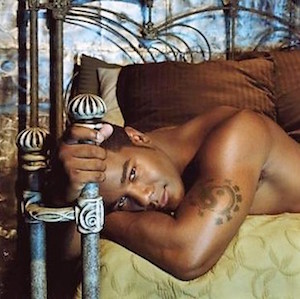
When David first met Tyler Knight, he was blown away by the combination of insight, intelligence, articulation, and smoldering black man porn star sexuality. They’ve been friends ever since. And now that his memoir is coming out, we thought we’d pick his brain on what’s harder, getting into porn or publishing.
Read the interview on the HuffPost.
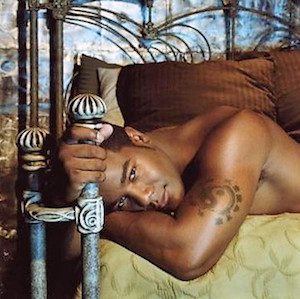
Tyler Knight
The Book Doctors: Why in God’s name would you do something as crazy as writing a memoir?
Tyler Knight: I had no choice. There was a story in me and it was bursting to get out whether I wanted it to or not. The irony is when I was a kid with little life experience, I wanted to write but I had nothing to say. Later, as a middle-aged man, I didn’t want to commit to writing a memoir, but the story inside me had other ideas. I read Jerry Stahl’s Permanent Midnight, Dave Eggers’ A Staggering Work of Heartbreaking Genius, and Mary Karr’s Liar’s Club. Those books showed me that to write a memoir that was worth reading required deep introspection… Picking at scabs and old scars, and then write the truth about myself no matter how ugly… And I wasn’t sure I’d the mettle to do that, let alone share it with the world. I knew it’d be a Sisyphean task of writing draft after draft of a manuscript for many years in a vacuum with no promise that the book would ever see the light of day. I expected my manuscript would be rejected by scores of literary agents. Maybe I’d find an agent crazy enough to schlep a literary memoir, from a pornographer no less, from publishing house to house until he found an editor who loved it. And that’s precisely what happened. But I also knew that I’d have no inner peace if I didn’t do it.
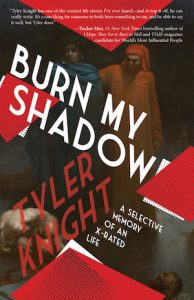
Burn My Shadow by Tyler Knight
TBD: David’s family didn’t speak to him for about five years after his memoir, Chicken, came out. Has there been any fallout, blowback, or madness as a result of you writing about your life in public?
TK: Well, I haven’t spoken with my father or anyone on my father’s side of the family since the ‘90s anyway, so there was no effect there. My mother’s side of the family… I can’t be certain if they know what I do for a living or not. It’s odd and telling when at Thanksgiving, people at the table never ask me how work is going. Sometimes the absence of conversation says more than the words that are said…
TBD: We are big fans of Rare Bird; they put out great books. Tell us about your process of getting this book published.
TK: My agent, Peter McGuigan, who co-heads Foundry Literary, was extremely hands-on with the editing process. I’d send him drafts, and he’d ink them up and send them back. Peter was my de facto MFA professor. Once we got to a point where the work was salable, he stopped shaping it… He knew it was important that whichever editor acquired the manuscript felt that they had room to put their own stamp on it. The feedback from some of the big houses was a lot of, “Right, he is a talented writer, but we need to make it more commercial.” That would have been more than just putting a stamp on the work. Peter showed it to Tyson at Rare Bird. We met in his office for a half hour meeting that stretched into almost three hours. We talked what I was trying to say, and he had ideas on how to clarify my vision. He got me. We came from the same planet. Books can take years to come out, so the relationship between editor and author is like a marriage. Both parties have to decide that they can work together for years to bring the book into the world.
TBD: While you’re at it, tell us about some of the joys and difficulties of writing a book about yourself and your crazy life.
TK: I come from a school of literary minimalism called Dangerous Writing. Its most prominent practitioners would be Chuck Palahniuk and Amy Hempel. It’s called Dangerous Writing because it forces you to explore what scares you… What about yourself would be mortifying if anyone else knew about it… And you go deep into those crevasses and linger until the feelings are exhausted, then move onto the next. It asks nothing less than absolute commitment to honesty from the author. It’s the perfect cypher for a memoir. Exacting my pound of flesh was the most alive I’ve ever felt in my life.
I have no interest whatsoever in foisting upon the public some bullshit celebrity “I’m-just-like-you!” zeitgeist memoir that risks nothing, asks nothing of its readers, and leaves them just as clueless as to who the author is as a human fucking being when they started reading. I declare the airport memoir dead.
TBD: You have such an incredible way with words, you really make us feel like we’re right in the middle of your life, with all the sights, sounds, and yes, smells that accompany this life. How did you manage to do that?
TK: Thanks, David. That’s a technique of Dangerous Writing: Going to the Body. You sprinkle details about sight, sound, smell, taste, and touch all through the story that, by themselves may not seem like much, but the cumulative impact by the end of the story is nothing less than visceral. My Bukkake story was the first time after many attempts where I finally got it right.
TBD: David gets writing from all over the world that revolves around sex. Most of it is really bad. What approach did you take to writing about sex?
TK: Yeah, most sex writing sucks because their authors love their metaphors and adverbs, and fail to grasp the concept of less is more. My approach was to show, don’t tell. Again, that’s both Going to the Body, and another technique called Recording Angel… You show the reader details without judgement (no labeling anything as good, bad, sexy, whatever), and let her unpack the details and reassemble them in her mind as she reads. Trust the reader to come to her own conclusion… To take ownership in the creation of the scene and story as she reads it. Far more powerful that way.
TBD: What made you decide to use a quote from Moby Dick in a book about your life as a porn stud?
TK: Moby Dick is my favorite novel, and the Knights and Squires section spoke to me… The conflict of good and evil wrestling for possession of a working man’s soul… Dignity in whatever your station in life may be… Faith and moral courage…
TBD: Which was harder, breaking into the adult film industry, or the publishing industry?
TK: Publishing, by far, is more difficult. So, you’re a good writer. Who cares? You still must do the work. Even then, your work may be rejected based on your query letter (basically a sales letter to agents about your book which doesn’t contain a single sentence of your actual book) by a 22-year-old intern who screened and deleted it before anyone in the position to say “yes” to you ever reads it. It happened to me. It happens to everyone. At least with porn, if you are not hideous and you can do the job, they’ll find a place for you. Don’t get me wrong, porn is by no means easy to get into, and it’s far from a meritocracy, but you will get judged on your ability to perform from the get go, sink or swim, rather than a being judged on some letter you wrote describing how good you’d be if you just had a chance.
TBD: What, if any, are your plans for writing?
TK: This is it. Burn My Shadow isn’t a vanity project for me. I’ve pushed my chips all-in with writing books… I can’t imagine a life without writing. I have a novel in its third draft which has nothing to do with pornography.
TBD: We hate to ask you this, but what advice do you have for writers?
TK: Lookit, I broke every rule and piece of advice that writers should follow, from not sticking to a disciplined writing schedule, to writing a memoir entirely in first-person, present tense. The world already has every example of how a book should be written. What the world doesn’t have is your take on things. Tell your story however you damn well please. The more specific it is to you and your truths, the broader its appeal to the world. Just write, man.
Tyler Knight, author of Burn My Shadow: A Selective Memory of an X-Rated Life, is an adult film star who has starred in over 500 films. In 2009 he won the Good For Her Feminist Porn Award, as Heartthrob of the Year, and was a Playgirl Spokesmodel. In 2010 he was nominated for the Urban X Award for Performer of the Year. He has also been nominated for eighteen AVN awards and has won three. Tyler lives in Los Angeles.
Arielle Eckstut and David Henry Sterry are co-founders of The Book Doctors, a company that has helped countless authors get their books published. They are co-authors of The Essential Guide to Getting Your Book Published: How To Write It, Sell It, and Market It… Successfully (Workman, 2015). They are also book editors, and between them they have authored 25 books, and appeared on National Public Radio, the London Times, and the front cover of the Sunday New York Times Book Review.
JOIN OUR NEWSLETTER TO RECEIVE MORE INTERVIEWS AND TIPS ON HOW TO GET PUBLISHED.
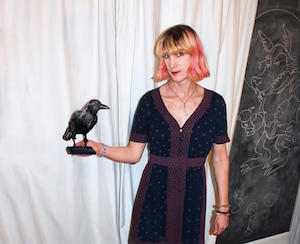
It’s hard to be a writer in the Bay Area and not know Charlie Jane Anders. Besides being a prolific writer, she is an incredibly generous networker and runs an absolutely awesome reading series called Writers With Drinks. So we thought we’d check in with her and pick her brain about novels, writing, reading, and all that jazz.
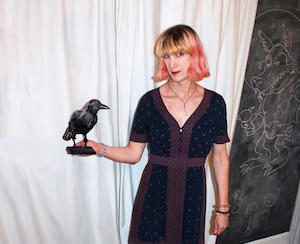
Charlie Jane Anders
The Book Doctors: In some ways, your book defies categories. To us, it felt like magic realism, but it has elements of fantasy, cyber-steam punk, and coming-of-age. When you sat down to write this book, did you think about what category it would be in? Did this make it more difficult to sell the book and find an audience?
Charlie Jane Anders: When I started to write All the Birds in the Sky, I was attracted to the idea of smushing together fantasy and science fiction by having a witch and a mad scientist in the same story together. I thought of the book initially as sort of pastiche or spoof. I would have all these standard fantasy tropes and these science fiction tropes, and they would be colliding in a funny way. That turned out to be very, very boring. Instead, I had to think more about what these two genres meant to me and how I connected to each of them personally. I was terrified that this genre confusion would make the book a hard sell — but it turned out the bigger problem was the fact that it starts out with the characters as little kids and then we see them grow up about 100 pages in. It seemed like some people could not quite wrap their minds around the idea of a book that feels like a young-adult novel at first but then becomes an adult novel. I was so grateful that my agent and publisher were willing to roll with it and didn’t try to get me to restructure the book, with flashbacks or whatever.
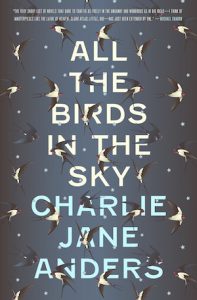
Book cover for All the Birds in the Sky by Charlie Jane Anders
TBD: David has, because of many personal experiences, felt like an outsider most of his life. So he especially related to the main characters of this beautiful book, and we wondered if your experience as an outsider helped shape these characters, who are fighting against a world that sees them as different, unusual, bizarre, and ultimately, threatening.
CJA: The theme of feeling like an outsider kept coming up in this book, in part because of the decision to start out with the main characters as kids. I think a lot of people can relate, one way or another, to the sense of not fitting in or being misunderstood. I had a rough time in grade school and middle school for a bunch of reasons, and I felt like writing honestly about growing up meant that I had to capture some of that emotional and physical insecurity that so many of us have lived with. And yet, having the kids grow up and live as twentysomethings meant that we got to see them as powerful adults, with control over their own lives and agency and all that goes with that. They can’t escape from being shaped by their childhood experiences, but they can choose how they deal with it.
TBD: You have put a lot of time and effort into reaching out to a community of writers. We suggest this to our clients all the time. How did you do this, and has this helped you in your writing career?
CJA: I can still easily remember when I felt totally isolated as a newbie fiction writer, and how hard it was to find people to connect with. Whatever point you’re at in your career, writers really need to stick together, to help deal with the pressure and insanity of the creative process and the publishing biz. I’ve had a blast curating Writers With Drinks, the reading series that I organize and (usually) host in San Francisco. I have gotten to meet a whole bunch of amazing writers — including David! — and hear them read. And it’s been a thrill to expose people to a new audience, especially since Writers With Drinks usually has as many different genres and styles as I can fit into one event. So you might come to hear the science fiction author, but discover a new favorite poet. But just as valuable has been the social aspect — an event where we’re all creating something together and nobody’s competing has been great for helping me (and hopefully others) make friends. I think being around these awesome, talented people has helped me raise my game as a writer, because I get to hear/read some of the best examples of the craft every month.
TBD: David has read several times at the fantastic reading series called Writers with Drinks, at the deliciously named Make Out Room in San Francisco, and he always has a blast. What have you learned by watching the hundreds of writers that you have wrangled into this wildly successful series?
CJA: Ha, see above. To add to what I wrote up there, I think that part of the fun of Writers With Drinks has been the thing of combining different genres and getting to see how a stand-up comic, a slam poet, a science fiction author and a literary memoirist are using some of the same techniques and approaches — just with different end goals. Plus you get to see how each genre is powerful in its own particular way. I love when you get people laughing their ass off one minute and then being moved to tears the next.
TBD: Tell us about io9 magazine.
CJA: Getting to be involved with the creation of io9 was one of the greatest opportunities of my life. Annalee Newitz, who founded io9, wanted to blend science and science fiction in a kind of homage to Omni Magazine, and it was really inspirational to see how the two things informed each other. After eight and a half years, I came away with a really strong sense that we are 100 percent living in the future. And I basically got paid to geek out about storytelling, and sometimes my half-baked ideas about books, movies and TV shows led to some of the most fascinating conversations with our readers and other folks. It was like getting paid to go to grad school.
TBD: You’ve been published in tons of small magazines and journals, like Tin House, McSweeney’s, and Zyzzyva, to name a few. How does a writer get published in these places, and how has this helped you in your publishing career?
CJA: When it comes to Tin House and McSweeney’s, I was only published on their websites, but it was still a major honor to be featured there. And getting into ZYZZYVA was one of the coolest things that ever happened to me. This super well-respected literary magazine chose to publish me way, way back when I was just starting out and barely getting my stories into tiny zines and the occasional website. In general, I published tons and tons of fiction in small publications, many of which have gone under or never received any exposure to speak of. Early on, I would publish stories pretty much anyplace that was willing to consider them, including one of those adult newspapers that’s mostly a vehicle for stripper ads. I didn’t make a lot of money from doing that, to say the least, but it was good to get the experience of having my creative writing appear in a lot of places and dealing with editors and readers. The whole process of making up a story — and having it turn into something that other people read and take in and form their own relationship with — is so weird, it might be kinda good to get used to it before you start reaching a bigger readership.
TBD: You won an Emperor Norton Award. First of all, what is that exactly, and how did you end up becoming a winner of this prestigious award?
CJA: Oh ha ha ha… the Emperor Norton Award for Extraordinary Invention and Creativity Unhindered by the Constraints of Paltry Reason is something that Tachyon Publishing and Borderlands Bookstore were doing for a while there — I don’t know many of them they gave out, but I was so thrilled. I think something about the weird, silly intros I cook up for the authors at Writers With Drinks, plus my bizarre fiction, struck someone as unhinged, in a good way. I was very flattered — hinges are good for doors, but I think a lot of people could stand to be a little less hinged. I’m always kind of scared of how many people seem to think they have everything all figured out.
TBD: You are a self-described “female geek.” What does that mean to you? And tell us about the anthology you put together that embraces this particular demographic.
CJA: Way back in 2006, Annalee and I were both approached about editing anthology projects for Seal Press, and we decided to collaborate. Our book was called She’s Such a Geek, and it was a collection of essays by women in science, technology and other geeky fields. We put out a call for submissions, and we were just blown away by the hundreds of submissions we received. There were a lot of heartbreaking stories by women who had been at the top of their class as undergraduates but then got treated horribly in grad school. A lot of geeky women of color shared stories of hearing subtle (and not-so-subtle) messages about their ability to keep up and contribute. There were also a ton of uplifting, thrilling stories of geeky triumph and discovery, from women who discovered a love of science, math, tech, gaming or science fiction and found that it changed their lives. It was an eye-opening, intense experience. Since that book came out a decade ago, we’ve seen way more women celebrating their geek identity, and venues for female geeks to come together. There’s an annual event called GeekGirlCon and a ton of other stuff. It’s been so awesome to see that happen.
TBD: In All the Birds in the Sky, Patricia the witch forms a really strong bond with her cat, Berkley. What happens to the cat after she goes off to magic school?
CJA: A ton of people asked me what happened to Berkley, who’s very important in Patricia’s life when she’s in middle school. I learned the hard way that you can’t leave any loose ends where cats are concerned — unless they’re loose ends in a ball of yarn, in which case go ahead. So I wrote a story called “Clover,” which is available at Tor.com, to explain what happened to Berkley later on. This turned out to be one of those things where you start pulling on one thread — to continue the ball of yarn metaphor — and then all sorts of interesting things start coming out. I ended up getting a chance to explore a bit more about the use of magic in my fictional world, and approach it from a very different direction than I did in the book, thanks to a different protagonist. Plus this story absolutely stands on its own — so if someone hasn’t read the book yet, this is a good way to dip into that world.
TBD: We hate to ask you this, but since you do have a column in which you give writing advice, what advice you have for writers?
CJA: The main advice I have for writers is to hang in there and keep writing. And also, to be kind to yourself. A writer — especially a beginning writer — has to keep two contradictory mindsets in order to keep going. You have to believe that you’re a flippin’ genius, your ideas are brilliant, and you’re a fantastic storyteller, or you won’t be able to summon the audacity and stamina to create the big, ambitious stories you want to tell. But you also have to be aware that your writing is going to have huge flaws, it’s easy to screw up, the craft takes a long time to learn (and you really never finish learning it), and when people criticize your work they’re probably on to something. That combination of hubris and humility can be hard to sustain and can easily drive you nuts. So be nice to yourself, and just keep writing even if you think you’re churning out garbage sometimes.
Charlie Jane Anders is the author of All the Birds in the Sky. She organizes the Writers With Drinks reading series, and was a founding editor of io9, a site about science fiction, science and futurism. Her fiction has appeared in Tin House, McSweeney’s Internet Tendency, ZYZZYVA, Pindeldyboz, Tor.com, Asimov’s Science Fiction, The Magazine of Fantasy & Science Fiction, Lightspeed, and a ton of anthologies. Her story “Six Months, Three Days” won a Hugo Award and her novel Choir Boy won a Lambda Literary Award.
Arielle Eckstut and David Henry Sterry are co-founders of The Book Doctors, a company that has helped countless authors get their books published. They are co-authors of The Essential Guide to Getting Your Book Published: How To Write It, Sell It, and Market It… Successfully (Workman, 2015). They are also book editors, and between them they have authored 25 books, and appeared on National Public Radio, the London Times, and the front cover of the Sunday New York Times Book Review.
JOIN OUR NEWSLETTER TO RECEIVE MORE INTERVIEWS AND TIPS ON HOW TO GET PUBLISHED.
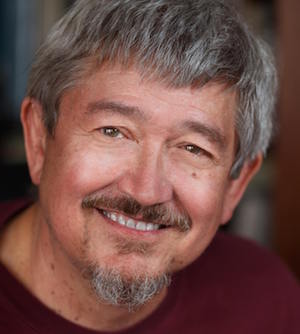
We first met Tamim Ansary many years ago through an intern who went to the same college as David and Tamim. David attended the San Francisco Writers Workshop, which Tamim ran for many years, and was startled again and again by how smart, kind and wise Mr. Ansary is. Having been a professional writer for four decades and taught hundreds of writers in general, and memoirists in particular, David thought he would pick Tamim’s brain about writing, publishing and storytelling, in anticipation of his new memoir Road Trips.
Read this interview on the Huffington Post.
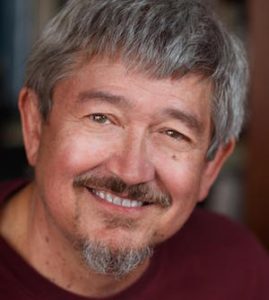
Tamim Ansary
The Book Doctors: Tell us about your new book, what inspired it, and what were some of the joys and difficulties of writing it?
TA: This book started out as an anecdote I wanted to tell my sister about a time I drove across the country in a cheap car with just enough money to cover gas. The crux was, I got caught in a blizzard. But when I started telling the tale, it turned out that it wasn’t enough to talk about the blizzard or the cheap car, I had to include why I was on that journey and what led to it. By the time I was done—hours later (my sister was patient, bless her heart)—I found myself obsessed with the idea that every journey is an odyssey if you consider it as a whole, especially if the destination is far away and difficult to reach, and you include what led to leaving and what came of having gone. So I decided to pick three iconic journeys and write each one up from start to finish in a single sitting, and that way produce a book in, you know, three nights. That was 12 years ago. I just finished. Ah well. The journeys in Road Trips all took place in the late ‘60s, early ‘70s. I was a newbie in America, then, coming of age at a remarkable moment in history. The book isn’t about history; it’s a personal story about coming of age. The ‘60s was just the context. I have to say, though, now that I’ve finished the book, it feels strangely relevant to right now. I mean, here we stand, at the threshold of the Age of Trump and it’s important, I think, to remember that there was another time so totally unlike this one. To recover that memory.
TBD: As someone who has written and taught memoirs, why do you think people are so drawn to reading about other people’s pain and misery?
TA: Is a memoir necessarily about pain and misery? Not sure I agree with that. Road Trips has some pain and misery in it, sure, but it also has humor, adventure, romance, pratfalls, pompous philosophical rumination–anything that might turn up in life. Because everything does. The pain and misery genre of memoir taps the impulse that makes us slow down to gawk at car accidents. And there’s a place for that. Mos’def. Memoirs like that can draw us into empathy with experiences we ourselves will never have to endure. That could be me, you think. But it can work the other way too. It can give you a glad sense of separation from experiences you’ll never have. Thank God, that’s not me. The kind of memoir that interests me is today’s version of the storytelling our species did 40,000 years ago, when we were little bands of hunter-gatherers huddled around our fires. That kind of memoir stokes our sense of human interconnection because it’s not just the people who were raised by wolves who have stories. We all have stories. In fact, we all are stories. When we hear one another’s stories, if they’re well-told, we experience the story-like quality of our own lives.
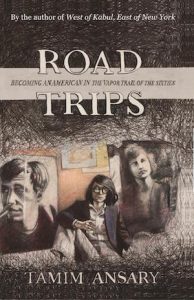
Cover of Road Trips by Tamim Ansary
TBD: Why did you decide to start your own publishing company? What are some of the challenges involved in making your own book, and then actually selling it to readers?
TA: The publishing company you’re referring to is Kajakai Press, and it came out of a grant I wrote seven years ago, funded by the Christenson Fund. I proposed to help young Afghan-Americans write about their lives, because here was a generation of young people who felt they had nothing to say. They were growing up in the shadow of their parents’ catastrophe, the holocaust in Afghanistan. Their parents had incredibly dramatic experiences to recount–imprisonment, torture, bombs, abandoning all they owned, running for their lives. Their children? They felt alienated in high school. Big deal! But my premise was, they had stories too, these children. The loneliness of living in the cracks—that’s a story. Growing up in the shadow of a catastrophe and feeling like you have no story—that’s a story. So I did the project, we got some great stuff, and I set up Kajakai Press to publish their work as Snapshots: This Afghan-American Life.
We sold out our print run and let the book go out of print but now, years later, I look at all the people who go through my memoir writing workshops and I feel like I want to help some of them—not all of them but some of them—get their stories to an audience. Because the writers I want to publish do have an audience. There are people out there who want to hear them. What they don’t have is a mass audience. And traditional publishers, unfortunately, can’t publish for many niche audiences—increasingly less so. Fortunately, technology has opened up new vistas with print-on-demand publishing that individual writers or small concerns like mine can access through Createspace, Nook Press, and others.
Distribution is the big problem, though. People often tell me they won’t order a book from Amazon, they’ll only buy books at a bookstore because they want to side with the little guy. I heartily endorse this position. Bookstores and books by traditional publishers offer something vital to the reading public, and that system must not be allowed to perish. But individual authors and imprints like mine are even littler guys. The only way this new niche-audience publishing can survive is for alternative distribution mechanisms to form, and that’ll only happen if readers open up to these alternative systems. Ordering online is going to be part of that. So it’s a process. We have to keep exploring, we have to keep opening up alternatives channels between writers and readers.
TBD: Tell us about your Memoir Pool project.
TA: Last year, I decided to start a website dedicated to the art of telling real life stories. Every week (except when circumstances intrude—like this presidential election) I publish a new story, by me or by someone else. As I said, I’m interested in the stories-told-around-a-campfire kind of memoir and with Memoir Pool I hope to help develop and promote that kind of memoir. Here, the premium is not what happened but what the writer made of it and how he or she told the story. So the stories at Memoir Pool might be about anything. There’s one by Colleen McKee, for example, about her mother giving out 59-cent pads of paper when she worked at “a private insane asylum” in Missouri. There’s another by Rick Schmidt about getting a really good deal on a sandwich thirty years ago. If those don’t sound like stories to you, look them up at www.memoirpool.com. You might change your mind.
TBD: What were some of your favorite books as a kid, and why? What are you reading right now?
TA: As a kid I liked big 19th century European novels—Dostoevsky, Tolstoy, Turgenev. Elliot and Stendhal. I consumed Dickens and Melville. The sweep! The tapestry! Today, I mainly read suspense thrillers: Lee Childs, Michael Connelly, Harlan Coban. The quicker they move, the better I like ‘em. You see a trajectory here? I do. The thing is, these days, I have to do such a ton of reading for my next project, a history of the world called Ripple Effects, How We Came to Be So Interconnected and Why We’re Still Fighting. You wouldn’t believe how much information you have to gather when you’re trying to tell the story of everything that ever happened from the big bang to the day after tomorrow. Modern literary fiction generally attracts me less than the classics used to or than crime fiction does today, although I have been recommending The Book of Strange New Things by Michael Farber to everyone who will listen.
TBD: You ran the famous San Francisco Writers Workshop for many years. What did you learn as a writer from listening to all those writers read all those words? Do you think that writers should be part of a writing group?
TA: The SFWW got started in 1946 and has met every Tuesday evening since then in some public venue. It’s free and no one maintains it except whoever’s in it at a given time—it’s operated this way for 70 years and counting. If that’s not a mystical phenomenon, I don’t know what is. I ran it for 22 years, but when I stepped down someone else took the reins and it’s still going strong. The great thing about that workshop is that writers flow through. It’s not some single static collection. On any given evening, you see both familiar faces and new faces. I learned a lot about writing by opening my ears to the staggering variety of things people thought worth writing about and the many ways they thought to go about it. Honing in on how to make a piece work when it’s not something you would have written flexes writing muscles you didn’t know you had and opens you up to new directions. Plus, at this workshop, people read their work aloud to whoever’s there, and I’m telling you, when you read what you’ve written to a group strangers and acquaintances, you can feel when you’ve got ‘em, and when you don’t. Apart from any formal critique you get. You can feel it. There’s no substitute for that. So yes, I think every writer could profit from being part of a writer’s group.
TBD: How is it different writing a history book than writing a book about your own history?
TA: Well, in a sense, history is memoir writ large, and memoir is history writ small. We live the lives we do because we’re alive at a certain time and place within the context of a much bigger story going on. What’s different about writing history, though, is that before you can start writing, you have to gather information that you didn’t have before, and you have to steep yourself in those facts until you start to see the story that is in those facts. With memoir, research is a final phase. You start with memory.
TBD: You’ve also edited many books. What has that taught you about being a writer?
TA: One part of writing is getting your voice going and getting out of the way. You have to do that, but what you produce when you’re doing that, even if you’re doing it really, really well, isn’t usually suitable to show to anyone except your cat. Or your dog if you want an enthusiastic response. Once you’re done getting the draft out, however, you have to put your brain to work and get your heart out of the way. Editing is purely about this kind of brainwork. By editing lots of other people’s work, you learn how to pick words, construct sentences of any length, brevity, or complexity, make them work, make them sing, purely on the level of diction and syntax. If you’re a cabinet-maker, it’s not enough to design a great piece of furniture: you have to have good tools. Language—words, sentences, paragraphs, structure—those are your tools as a writer, and those you can hone quite apart from any particular thing you want to say.
TBD: What if you’ve never done anything famous or important or sensational. Can such a person write a memoir?
TA: Absolutely. To me, there are really two kinds of memoir. One kind is an adjunct to the news. You hear about something of public interest, you want to hear about it from someone closer to the scene, an eyewitness maybe, a principal, even. With that kind of memoir, what you’re really interested in is the news event. I wrote one of those myself. West of Kabul, East of New York was published in 2002, right after 9/11; it was about the bicultural aspect of my life, growing up in Afghanistan, growing old in America. The transition between them, I didn’t really talk about. “I arrived in America, twelve years passed during which I never saw another Afghan”—that’s about all I have to say about that. I skipped over those years because they weren’t pertinent to the news event.
But those twelve years were a story too, and that’s the one I’ve tried to tell in Road Trips. I was a freak in Afghanistan because my mother was the first American woman there, and when I came America, the ‘60s were just getting underway, and there was this whole movement of people, millions of people, who were calling themselves freaks and dropping out of American society, and I joined them, even though I wasn’t part of American society. I did it to find “my people.” In that I was not unique. We were all declaring ourselves freaks so we wouldn’t have to feel like freaks. I had my version of a story millions of us lived through, and that’s kinda the point.
The stories that matter are the ones we’ve all lived. Growing up, getting lost, soaring high, crashing, falling in love, falling out of love, getting dumped, breaking it off with someone—all that stuff. Building a home. Raising children. Growing old. How was that for you? That’s the question. Those are the stories. The things we all go through are different for each of us, that’s what makes life so fascinating.
TBD: We hate to ask you this, but what advice do you have for writers?
TA: My advice to writers is this. Talk about writing all you want, that’s fine. That’s what we’ve been doing here. But don’t talk about writing as a substitute for writing. If you find writing painful, if getting the words out feels like pushing a camel through the eye of a needle—remember: that’s just what writing feels like. That’s how it probably felt to Flaubert and Raymond Chandler. But the aha! moments when you break through, when you nail it, when you get said exactly what you meant to say—in my experience, those are worth the struggle.
Afghan-American author and writing guru Tamim Ansary was born in Kabul, Afghanistan. He moved to America in 1964, attended Reed College in the late sixties, and later joined a countercultural newspaper collective called The Portland Scribe. Ansary wrote West of Kabul, East of New York, San Francisco’s “One City One Book” selection for 2008, and Destiny Disrupted: A History of the World through Islamic Eyes, winner of a Northern California Book Award for nonfiction. His new book Road Trips is about three tumultuous journeys that began and ended in Portland, Oregon.
Arielle Eckstut and David Henry Sterry are co-founders of The Book Doctors, a company that has helped countless authors get their books published. They are co-authors of The Essential Guide to Getting Your Book Published: How To Write It, Sell It, and Market It… Successfully (Workman, 2015). They are also book editors, and between them they have authored 25 books, and appeared on National Public Radio, the London Times, and the front cover of the Sunday New York Times Book Review.
